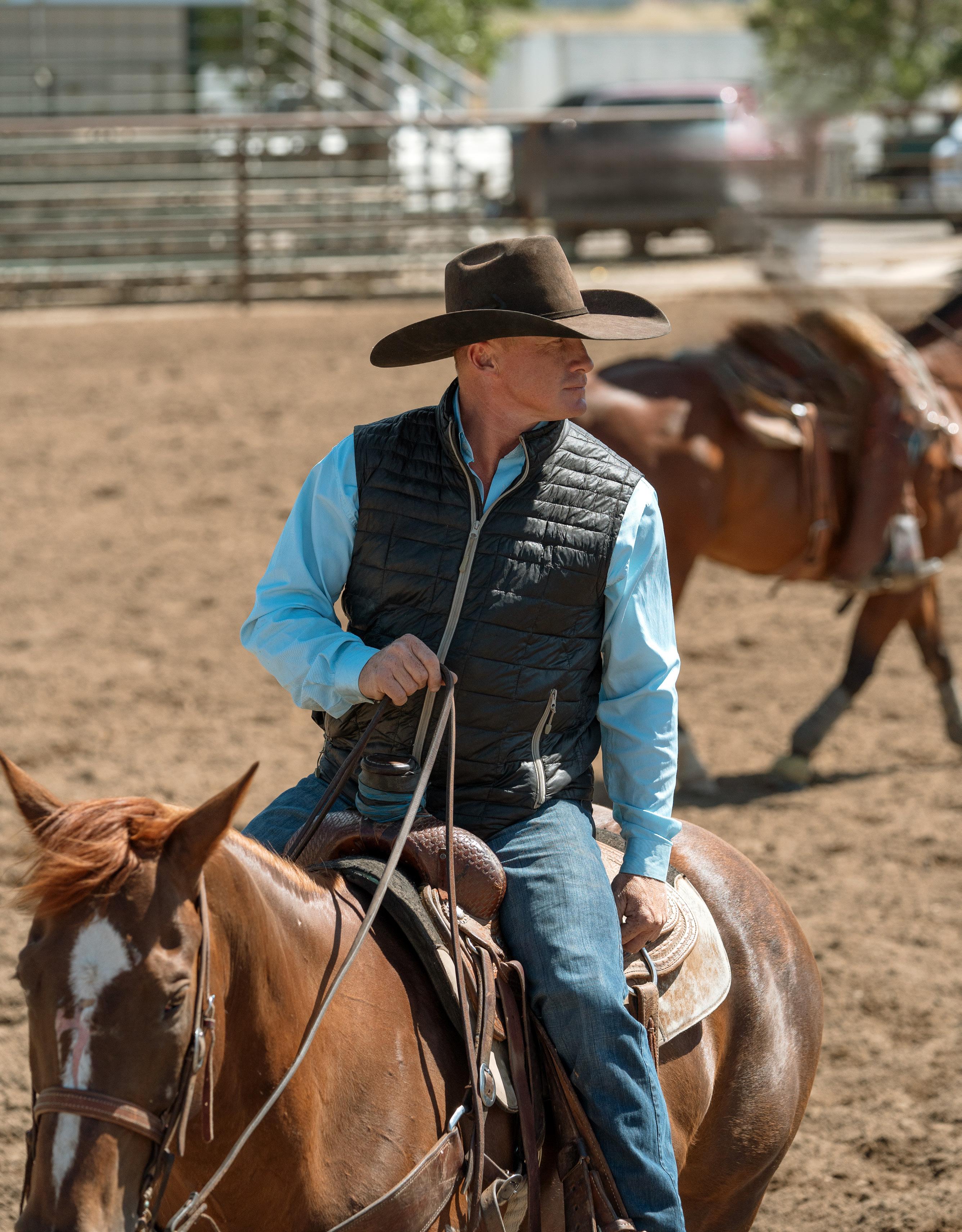
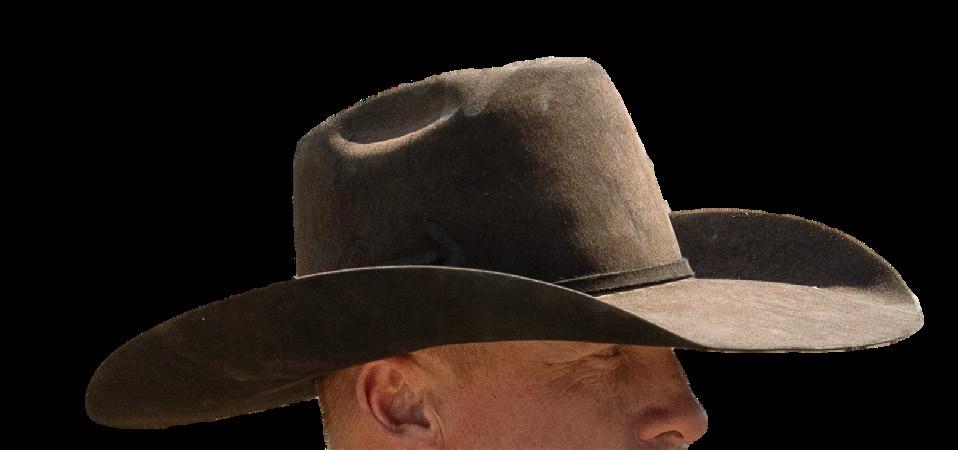




Two hospitals — a network of imaging centers and medical offices — are here for you
Good neighbors make life better for one another. So while you’re there for those close to you, we’re now close by to help take care of you. Whether it’s an everyday matter or more serious concern, like neurosurgery, trauma support or NICU care, we’re here to help you stay healthy and ready for all you’re made for.











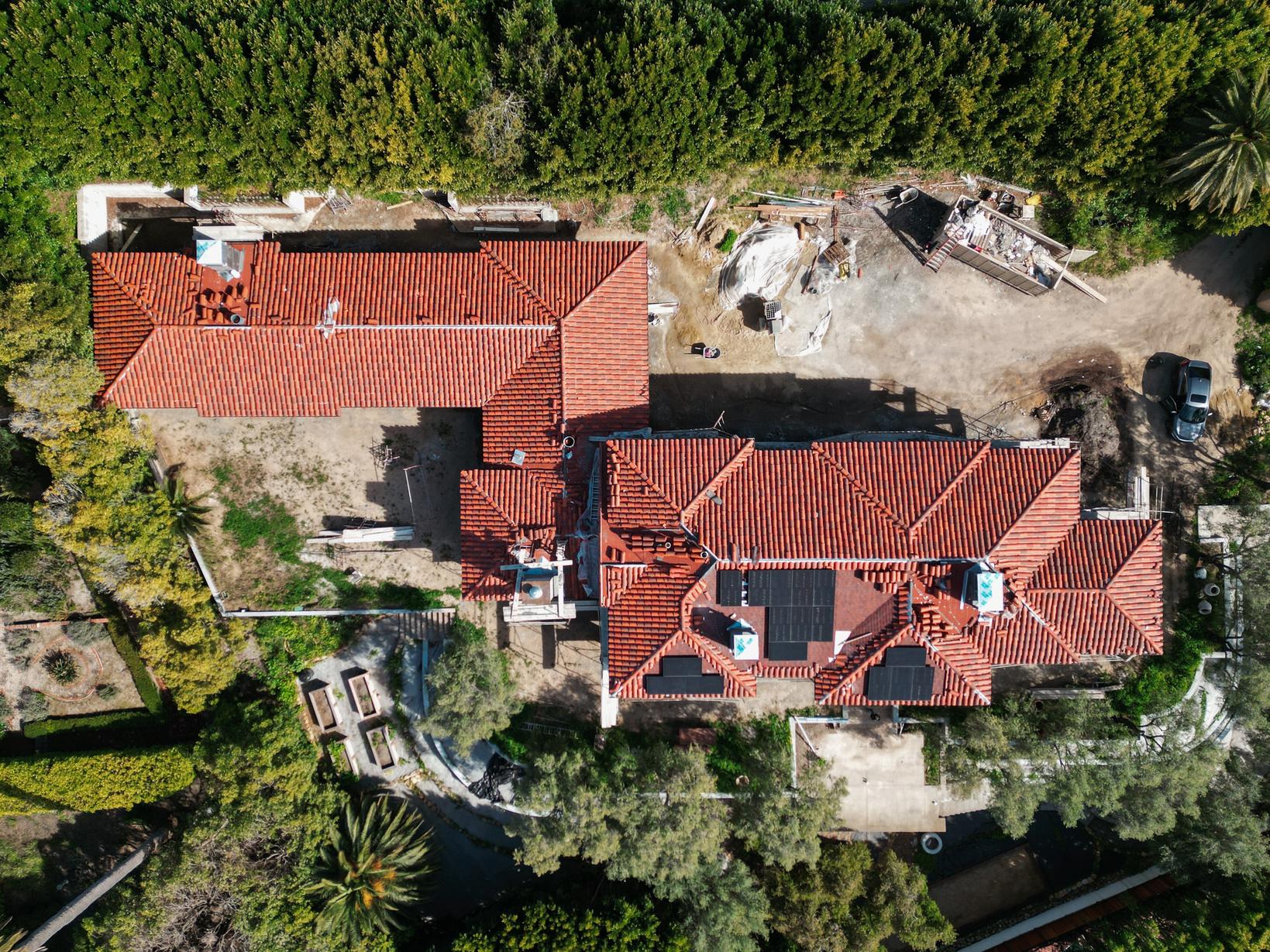









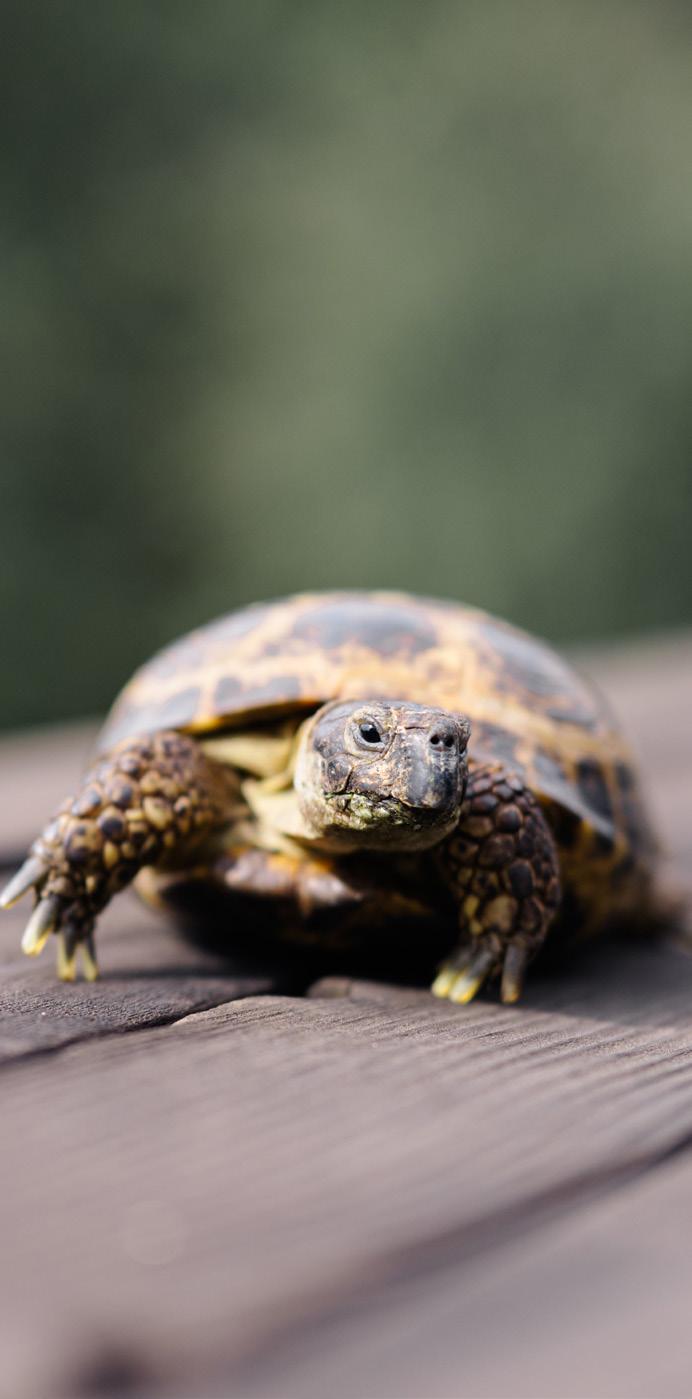








































This issue is a particularly sweet one for us—it marks our fifteenth anniversary.
Lately, I have been thinking a lot about time. There is nothing new about tackling the subject. Plenty of philosophers and poets throughout history have been foolhardy enough to do the same. That is, waste time thinking about time.
Einstein told us it’s not what we believe it to be—time—it warps, it bends, and it does all sorts of weird stuff aside from marching forward in a straight line. For some odd reason, I find that thought comforting because, for as much as I have tried to grab hold of it, to understand it—to really understand it—the best I have been able to do is to capture, to remember, a series of moments. Like the moment my wife, Sheryl, said to me: “Let’s start a magazine.”
The world was a much different place back then, at least for those of us who had been steamrolled by the Great Recession. We just had our third child, and the future felt about as certain as our ability to pay the past-due PG&E bill taunting us from behind a magnet on the fridge. It was time for a change of direction, a reboot. And, as always, Sheryl’s hunch was right.
Looking back now, I am unable to connect the dots, unable to walk it back in a straight line. Instead, I can only make out a cascade of fuzzy and misshapen moments:
I’m back at the old house. Sheryl is sitting at her desk in the kitchen, our new baby asleep on her lap. She waves me over. I walk barefoot across the vinyl floor. She whispers and points at the mock-up she designed on the computer and asks, “What do you think about the name SLO LIFE Magazine?”
I’m in my old truck. On the way back from the printer. The bed is overflowing with magazines. Issue One, Volume One. There’s too much weight. It handles like a sailboat bobbing in a squall. Something glints in the review mirror. Was that a seagull? It’s one of the magazines taking flight, fluttering into the ether, majestic. Fly, be free. Then another. Then hundreds, a massive flock, all at once, raining down behind me.
I’m pulling a pair of old, worn-out running shoes over my blistered toes. It’s been a week now, walking every street in every neighborhood, dropping the magazine on every doorstep in San Luis Obispo. I go back to the truck, load the empty stroller. Sheryl, with the baby strapped to her chest, hands a magazine to the two older kids, who race each other to see who can be the first to drop it off at the doorstep. We move on to the next house.
But, as always, it’s the people who bring the contours of those memories into focus, who add the color and texture. It’s those first clunky interviews. It’s the anxiety filled silence waiting—praying—for an advertiser to say, “Yes.” Mostly, though, it’s the relationships formed, the connections made. Listening to stories of lives lived, then sharing them with readers. That’s what it’s been about—that’s what it’s still about.
Over these fifteen years, I have been asked many times about the name we came up with: SLO Life. And, we certainly did consider other ideas, for sure, different titles, but, to us, it was an obvious choice. By then, we had lived here long enough to understand it. And, by “it,” I mean the magic of living here in this place, the SLO Life.
And, no, the SLO Life isn’t about the stunning landscape. It’s not about the impossibly perfect weather. Instead, it’s about the people. And it’s not always easy. As we all know, it’s an expensive place to live, and while many of us have our electric bill on AutoPay, there are those who are scrambling and hustling to be here, to stay here. Paying the way is not always automatic. But that’s just it. That’s where the magic is found—the scrambling, the hustling, the desire to be here, to stay here, to contribute to making this a better place. And, ultimately, to love our neighbors, to bring them along, to help them do the same. Just as our tagline says, “It’s about the people.” It’s always been about the people. It always has been. Always will be.
Thank you to everyone who has a hand in producing this issue of SLO LIFE Magazine and, most of all, to our advertisers and subscribers—the last fifteen years would not have possible without your support. It means more to me and my family than you will ever know.
Live the SLO Life!

Tom Franciskovich tom@slolifemagazine.com





Elder Placements realizes the IMPORTANCE of listening to the client, in order to find the appropriate:
Independent Living Assisted Living Alzheimer’s & Dementia Care Homes
Let their experienced Certified Senior Advisors take you on a tour to find the Retirement Home or Community that fits your loved ones Medical, Financial and Social needs, at NO Cost to you.

Nicole Pazdan, CSA,

4251 S. HIGUERA STREET, SUITE 800, SAN LUIS OBISPO, CALIFORNIA SLOLIFEMAGAZINE.COM info@slolifemagazine.com (805) 543-8600 • (805) 456-1677 fax
PUBLISHER
Tom Franciskovich
CREATIVE DIRECTOR
Sheryl Franciskovich
CONTRIBUTING WRITERS
Charlotte Alexander
Geneva Franciskovich
Dan Fredman
Chuck Graham
Paden Hughes
Jaime Lewis
Dana Lossing
Brant Myers
Brian Schwartz
Tim Townley
Tilly Wright
CONTRIBUTING PHOTOGRAPHERS
Xander Bissell
Pete Biltoft
Rosa Clark
Emily DesJardins
Rian Diener
Peter Heirendt
David Lalush
Mark Nakamura
Mariah Vandenberg
CONTRIBUTIONS
Have some comments or feedback about something you’ve read here? Or, do you have something on your mind that you think everyone should know about? Submit your story ideas, events, recipes, and announcements by visiting us online at slolifemagazine.com and clicking “Share Your Story” or emailing us at info@slolifemagazine.com. Be sure to include your full name and city for verification purposes. Contributions chosen for publication may be edited for clarity and space limitations.
ADVERTISING
If you would like to advertise, please contact Tom Franciskovich by phone at (805) 543-8600 or by email at tom@slolifemagazine.com or visit us online at slolifemagazine.com/advertise and we will send you a complete media kit along with testimonials from happy advertisers.
SUBSCRIPTIONS
Ready to live the SLO Life all year long? It’s quick and easy! Just log on to slolifemagazine.com/subscribe. It’s just $24.95 for the year. And don’t forget to set your friends and family up with a subscription, too. It’s the gift that keeps on giving!
NOTE
The opinions expressed within these pages do not necessarily reflect those of SLO LIFE Magazine. No part of this publication may be reproduced in whole or in part without the express written permission of the publisher.
CIRCULATION, COVERAGE, AND ADVERTISING RATES
Complete details regarding circulation, coverage, and advertising rates, space, sizes and similar information are available to prospective advertisers. Please call or email for a media kit. Closing date is 30 days before date of issue.
LETTERS TO THE EDITOR
info@slolifemagazine.com
4251 S. Higuera Street, Suite 800 San Luis Obispo, CA 93401
Letters chosen for publication may be edited for clarity and space limitations.








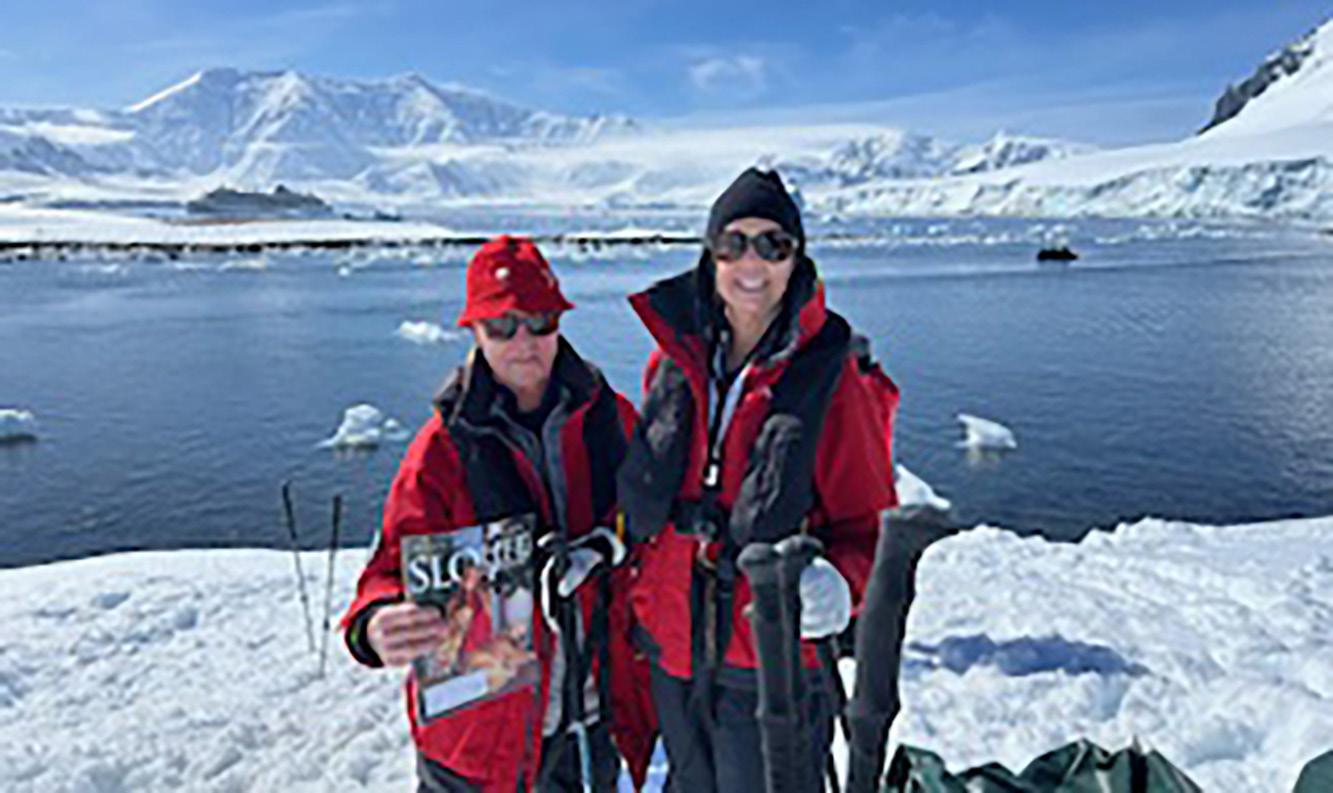



NATHAN, KELLY, EMMA, and KATE WONG

MONIKA GEHRKE and DARIN WARD


PAUL and ELLEN VANBEURDEN

HUDSON, THEO, BRANTLEY, DYLAN, CARTER, MADDIE, THEO, PARKER, GRADY, and ZACK












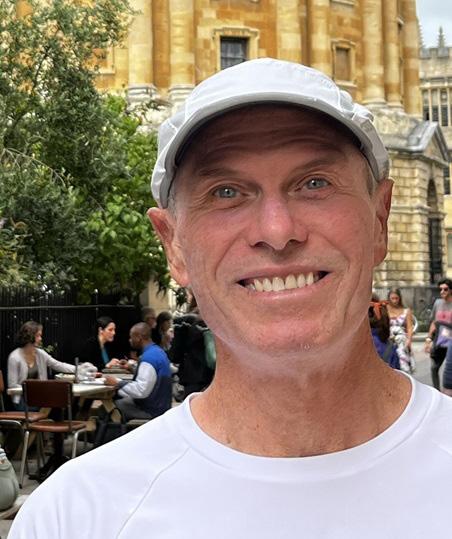














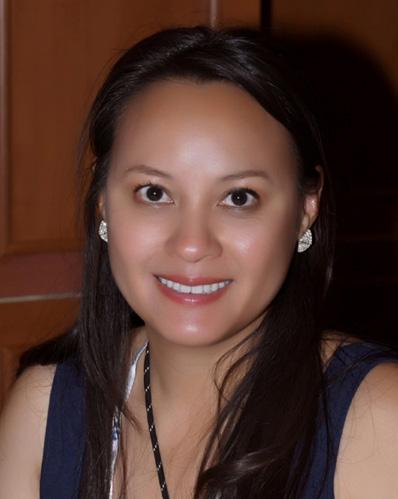
1. PETE BILTOFT enjoys photographing nature, sports, and events, and loving life in San Luis Obispo with his wife, Cyndi. You can follow him on Instagram @pjbig01.
2. ROSA CLARK is a family photographer based in San Luis Obispo. You can see her work at rosaclarkphotography.com.
3. EMILY DESJARDINS is an editorial photographer based out of her home town in San Luis Obispo County. Follow her on Instagram @emanatemoments.
4. San Luis Obispo local GENEVA FRANCISKOVICH has a passion for art and music and can usually be found surfing and sunbathing at the beach, hiking Central Coast trails, or enjoying a concert.
5. DAN FREDMAN is a SLO native immersed in the wine realm. He prefers LPs to streaming, Mac to PC, Fender over Gibson, and has nothing against screwcaps.
6. CHUCK GRAHAM is a photographer and the author of “Carrizo Plain” and “Paddling into a Natural Balance.” You can find him on Instagram @chuckgrahamphoto.
7. PETER HEIRENDT is a marketing creative producer and the founder of Shadowlight photography. You can follow him on instagram @shadowlightfoto.
8. PADEN HUGHES is an author, professional coach and co-founder of Gymnazo and enjoys exploring the Central Coast.
9. A Cal Poly alumnus with a background in Architectural and Product Design, DAVID LALUSH works as an architectural and real estate photographer on the Central Coast.
10. DANA LOSSING is an interior designer at SLO based Ten Over Studio with a passion for dancing, yoga-ing, thrift-shopping, and adventuring with her family locally and beyond.
11. JAIME LEWIS writes about food, drink, and the good life from her home in San Luis Obispo. Find her on Instagram and Twitter @jaimeclewis.
12. BRANT MYERS is a the founder at slobiiig.com, a hospitality consulting firm, and Toddler Timber, where he makes wooden children’s toys.
13. MARK NAKAMURA is a wedding, event, family, architectural, commercial, and landscape photographer. Find him @nakamuraphoto and @marknakamuraphoto.
14. BRIAN SCHWARTZ is a publishing consultant and advocate for local authors. He can be reached at brian@selfpublish.org.
15. MARIAH VANDENBERG has a background in neuroscience and is an active photographer, artist, musician, and outdoor enthusiast.
16. TILLY WRIGHT is a Central Coast blogger, web specialist, and software support professional. Connect with her at tillywright.com or read her blog at sanluisobispomom.com.
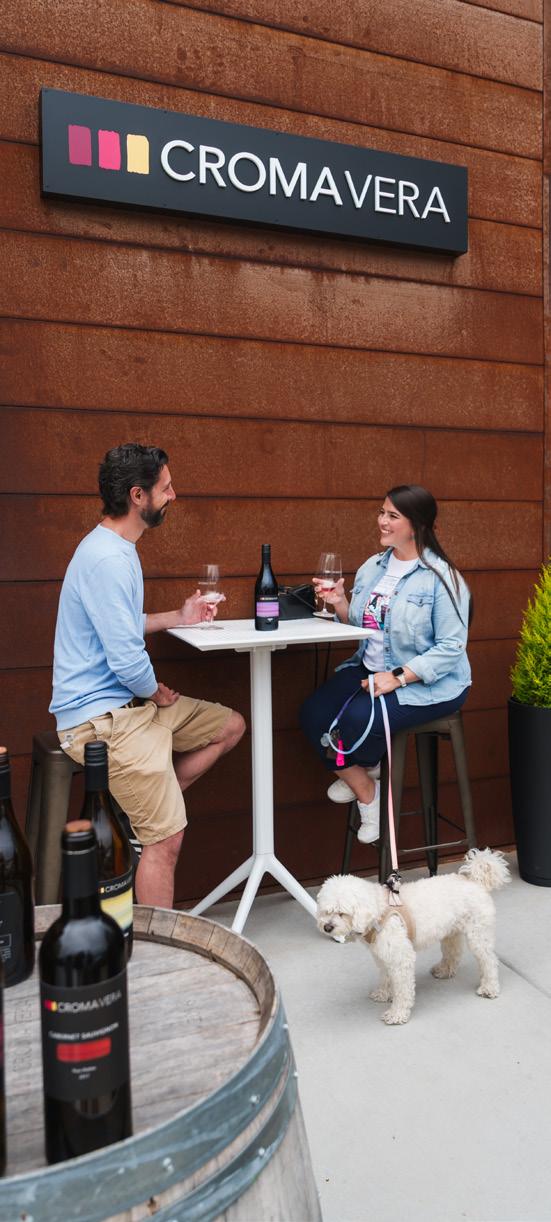


Spanish-inspired wines from sustainable vineyards on the Central Coast
Minutes from Downtown SLO Walking distance to other wineries, cideries & breweries
3183 Duncan Ste D San Luis Obispo www.cromavera.com


Expert help just when you need it. Since 1988, we’ve served SLO with unparalleled Medicare and insurance services. Let us help you get the coverage you need today. 1443 Marsh St, San Luis Obispo, CA (805) 544-6454 | www.polkins.com Agency Lic# 0D44015

The County of San Luis Obispo shares that it is currently running a $15.3 million budget deficit, however, it expects that number to more than double to $33.4 million as increased salaries and new expenditures are taken into account. Meanwhile, the county’s unfunded pension liability—the difference between what it expects to owe its retired employees in pension benefits and what it actually has in assets—topped $1 billion for the first time.
A boisterous and energetic placard-waving crowd estimated at 5,000 gathers at the steps of San Luis Obispo Superior Court to protest the actions of President Trump and Elon Musk. The protest was in coordination with a national day of action under the organization known as 50501, which aimed at voicing opposition to the current administration’s policies, and in particular, those of the Department of Government Efficiency, or DOGE.
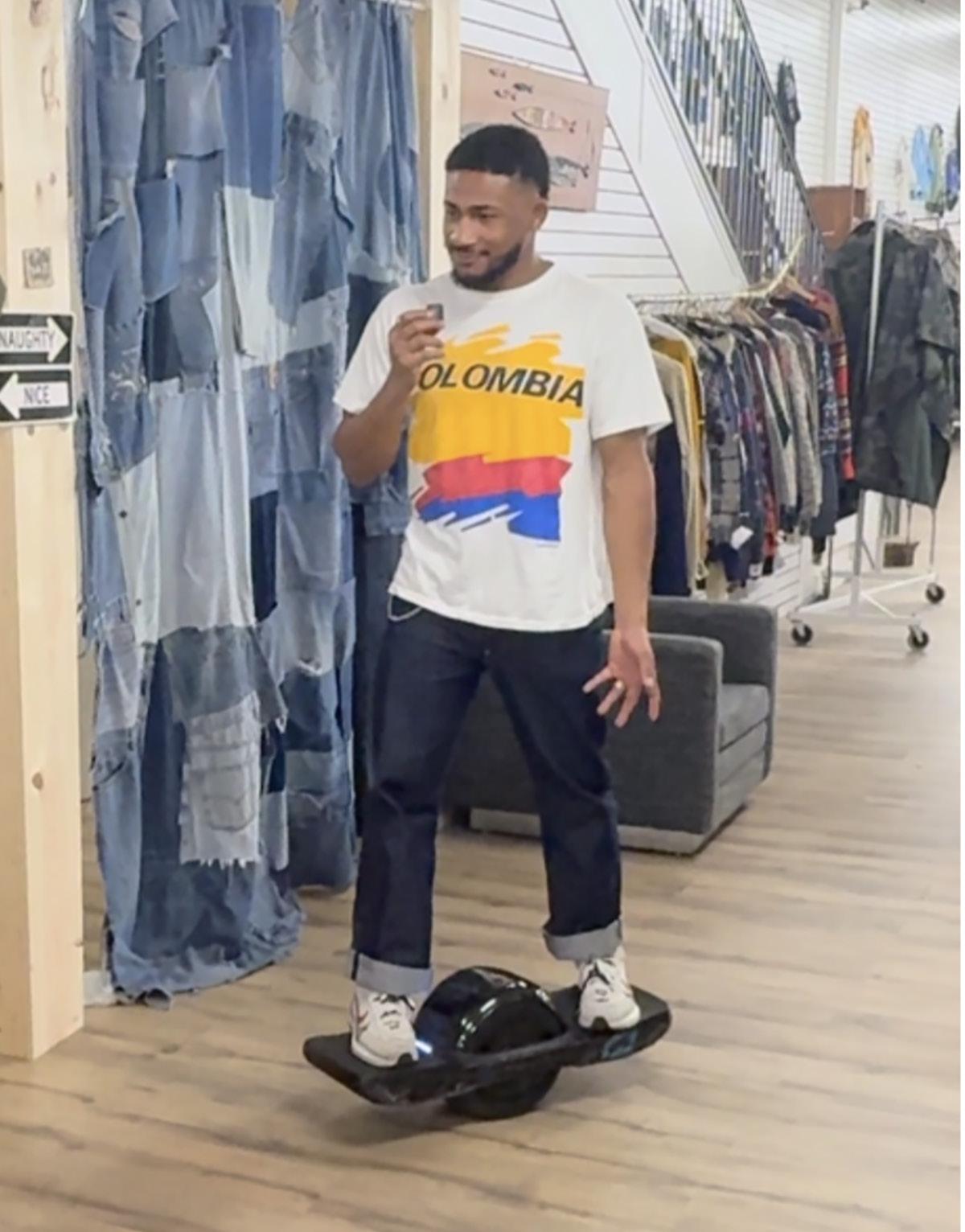

Videos posted by San Luis Obispo store owner Adam Kemp go viral online. The short clips show Kemp chasing down shoplifters on his Onewheel, an electric skateboard, as he attempts to put a stop to theft at Thrifty Beaches on Higuera Street. He said: “People shouldn’t be able to steal and then go back to work the next day like nothing happened.”
Cal Poly was notified by the agency known as “ICE” (U.S. Immigration and Customs Enforcement) that three of its recent graduates and one international student had their visas revoked. At the same time, more than 1,500 international students nationwide also lost their visas. Later in the month, amid a torrent of lawsuits claiming the denial of due process, the Trump administration reversed course, reinstating nearly all of those visas, including those belonging to the four local students.
A wrongful termination lawsuit was lost by former San Luis Obispo Mayor Heidi Harmon who alleged that her employer, Let’s Green California!, had dismissed her after reporting “racist comments” made by her supervisors. Harmon left her post as mayor unexpectedly in 2021 to join the organization as its public affairs director where she claimed that the executive director made “consistent and repeated offensive, racially charged comments” such as, in discussing a third party: “She’s a Chinese professor, so you know she’s smart.”

After the State Water Resources Control Board found unsafe levels of bacteria in the water supply, South County residents of Pismo Beach, Arroyo Grande, and Avila Beach are ordered to boil or purify their tap water. The order was lifted a few days later after extensive testing confirmed that it had been sufficiently cleaned.
Jeffrey Armstrong, Cal Poly’s president, testifies before Congress regarding his university’s handling and response to antisemitism on campus. Armstrong was invited along with two other college presidents by Republican members of the House Committee on Education and Workforce. The invitation came a week after Armstrong refused to sign a public statement condemning “undue government intrusion” on college campuses. The letter, however, had been signed by 500 other university leaders nationwide.
The seemingly never-ending “culture war” gripping the country flared up at a Lucia Mar school district meeting when hundreds of people weighed in during a lengthy public comment session concerning trans students’ participation in athletics and use of restrooms. The following week, a dust-up in Morro Bay leads to a packed house city council meeting where it is decided that the rainbow pride flag will no longer be flown over city buildings.

The women’s baseball club at Cal Poly takes first place at fourth annual Baseball for All College Club Championship help in Sonoma County. The team beat USC in the semi-finals before edging out UC Davis to take the title. Several of the players are pursuing a spot on the upcoming formation of the Women’s Professional Baseball League, which had recently been featured on the “Drew Barrymore Show.”
Pismo Beach is named the best coastal small town in the nation by USA Today citing its “beautiful beaches, natural attractions, and award-winning boardwalk.” The paper encouraged its readers to visit the town that “offers a calm and charm that is hard to find in more populated areas” and to “grab a surfboard and catch some waves.”
“Bro, you hit the jackpot.”
Wilson Samaan, manager at Sandy’s Deli-Liquor in San Luis Obispo, told a homeless man that he had purchased a lottery ticket that netted him a $1,000,000 prize. Samaan then offered to drive the customer, who does not own a car, to the nearest lottery office in Fresno to redeem his winnings. “It’s gonna change his life forever,” he said. “I hope for the good.”
11 Years
What started out as a small evening concert at the top of Cuesta Ridge as the last “shebang” before summer with twenty or so friends, has grown into a full-blown music festival spanning over a weekend with camping at El Chorro Regional Park and live performances held at Dairy Creek Golf course drawing thousands of attendees. This year, over the weekend of May 2nd, marked the 11th annual Shabang Music Festival.
Number 25
Cal Poly’s baseball team cracks Perfect Game USA’s Top 25 rankings. The last time it was ranked nationally was in 2022 when the Collegiate Baseball Newspaper poll put them at Number 18.
$1,185,201
The final tally from Cal Poly on its expenditures related to this year’s St. Fratty’s Day. The university reported that the lion’s share of the costs went toward its on-campus music festival, which came in at $703,712 with most of the remaining balance going toward policing.
David Steiner, a shark enthusiast and Arroyo Grande resident, captured drone footage of a massive great white shark cruising around among surfers in the shallow waters of Pismo Beach. “Don’t be afraid of the water,” he added. “The lack of incidents proves to me that they’re not interested.” #1
“They’re back in town.”
280
Out of 280 state parks in California, Morro Bay State Park is voted by campers as the best. “We launched the first ever Best of California’s State Parks poll to honor and highlight the deep connection that people have to our parks,” said Rachel Norton, Executive Director of California State Parks Foundation. “With summer approaching, we hope Californians will use the poll results to get inspired to go outdoors with family and friends.”
$125,000
Cal Poly’s Center for Innovation and Entrepreneurship hosted its eighth annual AngelCon start-up pitch competition and GreenSight Technologies, a company that provides solutions for companies needing to dispose or resell old computers, walked away with a $125,000 investment.
“The greatest known active and unaddressed public safety threat.”
Michael Lowe, San Luis Obispo’s Chief Building Officer, following the eviction notice served on Bang the Drum, a popular microbrewery, and SLO City Church, the tenants at 1150 Laurel Lane, following the assessment that ongoing construction had made the structure unsafe.
409
The number of new homes proposed for Broadstone Village, a new housing development on the south end of San Luis Obispo that hopes to connect to the Bob Jones Trail. The project encountered immediate pushback from the neighbors and is facing a long and difficult approval process.











BY MARK NAKAMURA
If I had to choose a favorite place to photograph sunsets, Montaña de Oro State Park in Los Osos would be at the top of my list. Known for its dramatic cliffs, secluded beaches, and sweeping coastal views, the park offers some of the most striking natural backdrops on the Central Coast. Its name, which means “Mountain of Gold,” is a nod to the golden wildflowers that blanket the hillsides in spring—but for me, the real gold is in the light at dusk.
This evening, I had just wrapped up a senior portrait session at Montaña de Oro when something caught my eye at the park’s entrance. A classic “woody” station wagon was parked perfectly against the backdrop of a vivid, multicolored sunset. The scene was too good to pass up.
I quickly pulled over and reached for my camera, which was equipped with a 24–70mm f/2.8 lens. Initially, I left the settings on Program mode (P), letting the camera automatically determine the aperture and shutter speed. I moved around the scene—zooming in and out, adjusting my position—until I found the composition I wanted: the station wagon in the foreground with the glowing sunset behind it, casting the car and driver into silhouette.
Once I had the basic framing, I switched to Manual mode (M) to take full control of the exposure. I set the ISO to 100 (the lowest native setting), selected a shutter speed of at least 1/125 second to prevent motion blur, and chose an aperture between f/4 and f/8 for optimal sharpness. I also bracketed my exposures—shooting slightly under- and overexposed images—to ensure I’d have the best possible files to work with in post-processing.
The quality and direction of the light, paired with a strong, recognizable subject—in this case, the vintage car and its driver—can transform an ordinary snapshot into a compelling image. The essence of silhouette photography lies in placing the light source, here the setting sun, behind the subject. This technique renders the subject as a darkened shape, emphasizing its outline and form rather than detail.
By thoughtfully balancing light and shadow, a photographer can draw attention to the simplicity, structure, and storytelling potential of a scene. It’s not just about capturing what you see— it’s about shaping how others see it, too.
A few days ago, the Development and Capital Campaign Director at the San Luis Obispo Repertory Theatre, PATTY THAYER, stopped by to tell us a little about herself, as well as to provide an update on the organization’s efforts to build their new downtown performing arts facility. Here are a few highlights from our conversation . . .
Let’s start off by talking about you, Patty. Where are you from?
Well, I was born in New York—White Plains, New York—outside of the city. My dad worked in Manhattan. I was one of five kids, the second-to-last, and the only girl, so I was a tomboy. We moved to Connecticut when I hit high school. New England was great, and I was spoiled rotten to live on a lake. During the summer, you just ran down the front yard and jumped in the lake. During the winter, you would go ice skating. It was wonderful—a wonderful place to be in high school.
Aside from being a tomboy, what were you like as a kid? I was very shy, but I loved theatre. I would go to Broadway shows with my mom. When I got into high school, I got really involved. There is nothing like performing to help you get over your shyness. I decided to major in theatre in college, and my parents thought I was nuts, especially my dad. I went off to school in Ohio and then, later on, I transferred to Alabama. Right after I got my degree, I moved to California to join a theatre company in San Diego, Coronado Island, actually, called Lamb’s Players Theatre.
Isn’t that where you met your husband?
Yes, he worked there as a lighting and set designer. For our first date, I hopped on the back of his motorcycle and away we went, off to a Carlos Santana concert. Later, he was hired by Cal Poly, and that’s how we ended up here thirty-two years ago. At first, I was a stayat-home mom with our two kids, but I went back to work after they were a little older. I started with Festival Mozaic, back when it was still called the Mozart Festival, as a part-time office manager. Then, I went full-time at SLO Symphony to do marketing and development. Twelve years ago, I went to SLO REP, where I


have worn a lot of hats—I’ve done a little bit of
Back then, it was called the SLO Little Theatre, correct? That’s right. Since the beginning, going back to 1947, it was a volunteer, community theatre. But in 2017, we changed the name and became a fully professional organization. All actors are paid; everybody’s paid. It’s now a fully professional theater company. So, as part of that process, we started talking about finding a new home, and the City said, “Hey, you can have this little piece of land next to what will become a parking garage.” We hired a consultant to do a feasibility study and found that it would cost us around $8 million to build it, even though they thought we would only be able to raise about $4.5 million. We talked it over with the board, and they said, “We can do
After the pandemic, all the costs went up, and we were told it wasn’t going to cost $8 million, instead, it would be $18 million. We went back to the board, back to our donors, and pivoted a bit by purchasing an existing commercial building where we now do all our set and costume construction, all our educational programs, and our administration, which allowed us to expand our performance space downtown. It was a Hail Mary at the time, but it turned out to be a brilliant move. It allowed our educational programs to triple in size. And, of course, the new construction project estimate has increased again to $21.5 million, but we are closing in on the finish line. Only $1.3 million left to raise. The community has stepped up in a big way—everyone from million-dollar donors to a little boy who gave us a five-dollar bill from his allowance.





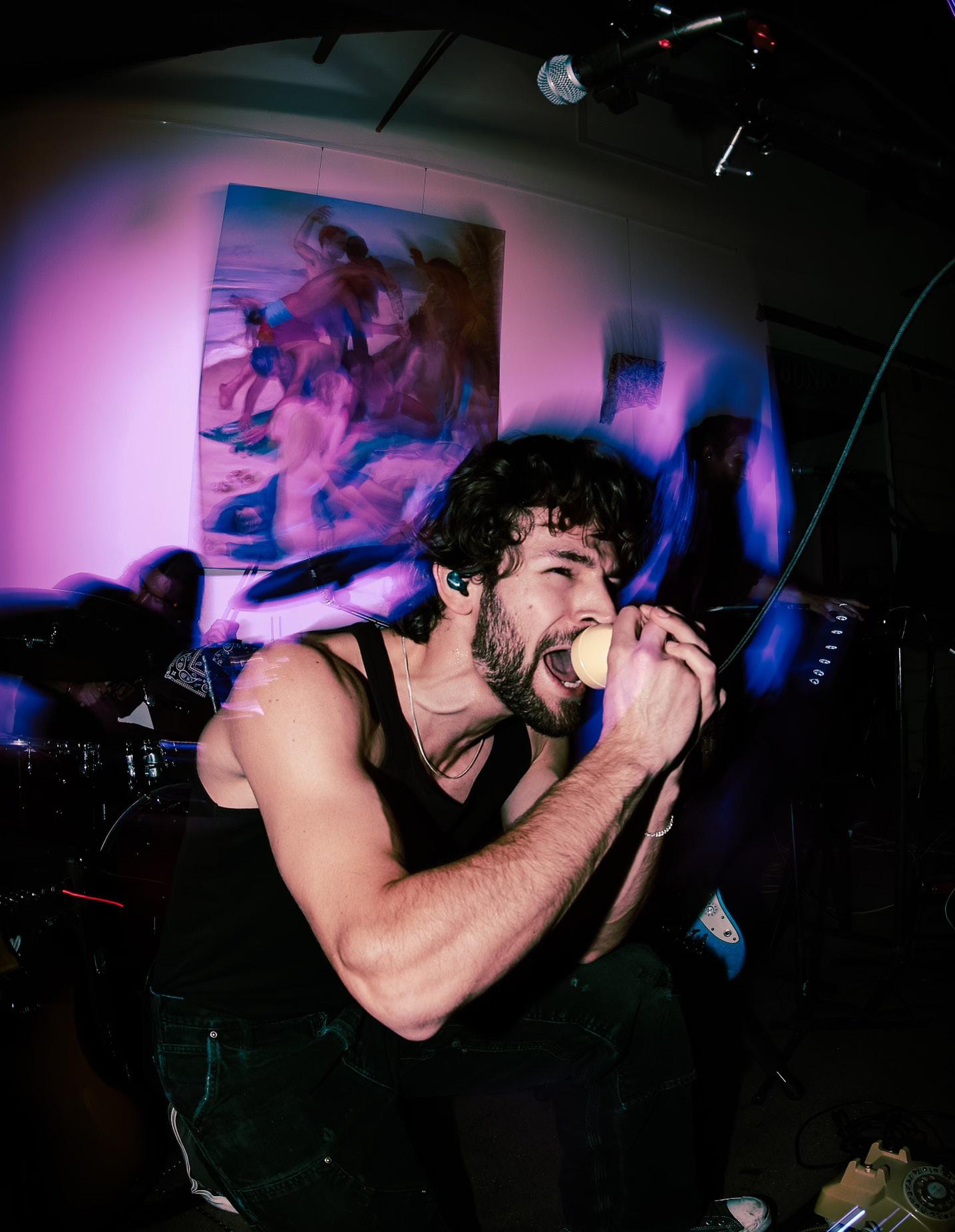

BY GENEVA FRANCISKOVICH
PHOTOGRAPHY BY RIAN DIENER AND XANDER BISSELL
Drawing inspiration from a satellite crash into Saturn, the band Saturn Death Dive has crafted a distinctive persona and cohesive artistic identity that adds a fresh dimension to the San Luis Obispo music scene.
The quirky name originated with Jack Semancik, the band’s rhythm guitarist and lead vocalist. Fueled by curiosity, Semancik has long been fascinated by Greek mythology, underground bands, and outer space—interests he’s explored through Wikipedia deep-dives and space documentaries. Raised in the small town of Bend, Oregon, Semancik sees similarities between his hometown and San Luis Obispo. As a teenager, his family relocated to Sasebo, Japan, a small city near Nagasaki. Living on a U.S. military base, he embraced Japanese culture and gained a broader worldview. To this day, he keeps Siri in Japanese and his phone set to military time.
During his early years in Japan, Semancik became captivated by the planets, particularly Saturn. He vividly recalls watching the documentary “Death Dive to Saturn,” in which a small satellite captured unprecedented footage of Saturn’s rings before crash-landing into the planet. The dramatic imagery—”boom-crash!” as he puts it—struck him as the perfect concept for a future rock band. The name stuck. Over the following years, he wrote songs and gradually developed the band’s identity.
In 2017, Semancik returned to the U.S. to study political science at Cal Poly. During Week of Welcome, he met guitarist Alex De La Cruz and percussionist Tony Joe Ross—two musicians who would become his closest collaborators.
De La Cruz, the band’s lead guitarist, grew up in Windsor, a town nestled in Northern California’s wine country. At eleven, he picked up his first acoustic guitar from Costco and was hooked. Soon after, he bought a small electric guitar, which he covered in stickers and Sharpie art. “I love to decorate,” he says with a laugh. “So naturally, I covered my guitar in stickers.”
A self-taught musician, De La Cruz embraces the freedom of playing without formal training, leaning into a raw, expressive style. When he’s not making music, he creates gritty, digital artwork used for the band’s album covers and promotional materials—extending their cosmic aesthetic. Since graduating, he’s channeled his creative drive into a career in architecture.
Ross, the band’s drummer and producer, hails from suburban Cleveland, where music was a constant presence—his father’s band practiced in the living room. In high school, he joined the marching band and juggled multiple music projects, eventually developing a passion for songwriting and production. During college, he collaborated long-distance with a friend from Ohio under the name Fifteen-Love—a playful, tennis-themed project known for its upbeat sound.
Now a producer at Sauce Pot Studios, Ross brings technical expertise to Saturn Death Dive’s recordings. Still, the work isn’t without its frustrations. “Sometimes producing music makes me hate music,” he admits. “It takes so much more than people think—like setting up thirteen mics just to capture one clip.” Despite the challenges, Ross remains a key force behind the band’s sound. He also drums for another local group, LOVR, alongside De La Cruz.
Outside the studio, Ross volunteers at an antique shop, flipping vintage finds. He also collects guitars—many passed down from his father—treasured reminders of his roots.
Together, Semancik, De La Cruz, and Ross form the creative core of Saturn Death Dive. What began with Semancik’s vision has evolved into a collaborative force, with each member shaping the band’s sonic identity. Their performances at local venues—The Bunker, SLO DO CO, Liquid Gravity, and Humdinger Brewing— are known for high energy, cosmic themes, and fan favorite songs like “Crush Zone” and “Aester Drift.”
But their path hasn’t been without setbacks. Their upcoming EP, slated for release this summer, reflects a darker tone—born out of a string of devastating robberies. Dubbed “the band’s curse,” it began when Ross’s car was broken into. His laptop and hard drive—containing eight years of work—were stolen. Days later, the apartment shared by De La Cruz and Semancik was burglarized. Among the losses: personal items, songbooks, and even a truck, which has yet to be recovered.
In the aftermath, the band turned to songwriting as a form of therapy. The new EP captures the emotional weight of that period, channeling shock, frustration, and resilience into music. “We never expected something like this to happen in a town like SLO,” Semancik says.
Still, Saturn Death Dive presses on—fueled by creativity, camaraderie, and a vision that’s equal parts myth, memory, and outer space. Their story is one of persistence, imagination, and the strange kind of magic that happens when a satellite crashes into Saturn—and three musicians make music from the debris. SLO LIFE
Catch Saturn Death Dive on Spotify, and follow them on Instagram @saturndeathdive for performance clips and show updates.
It was so deeply ingrained, so familiar—no different than the snowcapped peaks watching over the ranch—that it didn’t capture his imagination at first. But once it did, there was no turning back. For San Luis Obispo resident BEN LONDO, rodeo is as much a part of him as the various components making up his reconstructed knees. Now, after a long professional career, he looks after the next generation of ropers as Cal Poly’s Head Rodeo Coach. With planning underway for his wildly popular beach rodeo coming up this fall, we were able to sit down for a talk with the cowboy. Here is his story . . .
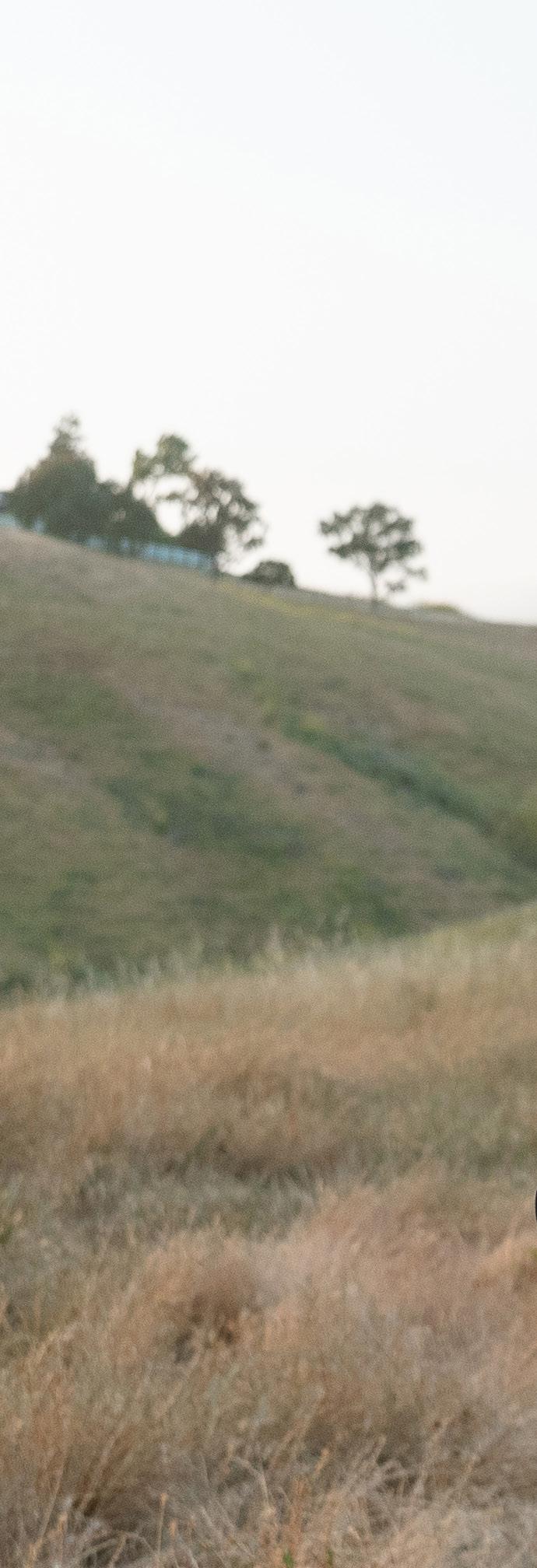
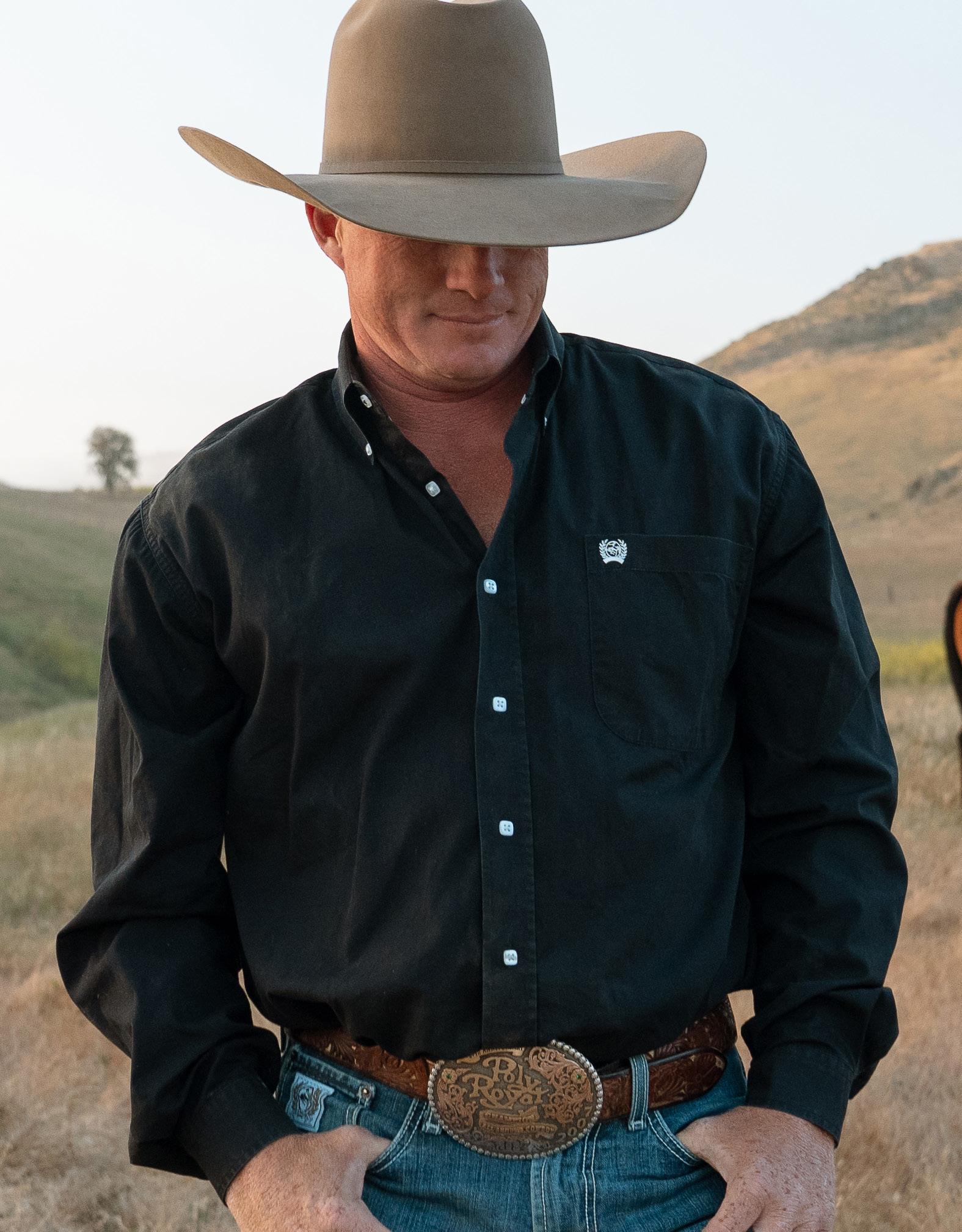

OOkay, Ben, let’s talk about where you got started.
I was born in Oregon. Grew up in Eastern Oregon on a 50,000-acre ranch with another 100,000 acres in B.L.M. [Bureau of Land Management] property. It was beautiful country in the mountains. Then, we moved around a lot, but we were always in rural areas. I have an older sister, and we grew up in a rodeo family, fourth generation going back to my great-grandfather. We have pictures of him getting on bucking horses back when they would circle the Model A’s out in the middle of a field somewhere and just buck horses. Growing up, my dad rodeoed. He was a professional for many years.
Did you take to it early?
No, not right away. I was more into traditional sports. I loved football. My high school was really small, so we played eight-man football, but we did go to a state championship. I didn’t take much interest in rodeo until around ten or twelve years old. My family had some rental properties, so we were always doing construction, fixing them up. Sometimes we would move a wall, or modernize things, and that always turned my crank a little bit, so I thought I’d like to become an architect.
Is that how you ended up at Cal Poly?
My dad went to Cal Poly. He had a rodeo scholarship here before he went to Vietnam. When I was in high school, I came down to check out the school. I left my home in about a foot of snow back in Oregon—I think it was mid-February—and found this absolutely beautiful weather and this incredible scenery in every direction. I spent maybe two quarters in Architecture. It was six-hour-long labs, just sitting there doing drawings and living life indoors. I was doing good work, but my professor could see it wasn’t in me. One day, he pulled me aside and said, “I can tell you don’t want to be here.” So, he introduced me to Construction Management, which was a little more my speed. That’s what I graduated in.
And you were on the pro circuit in rodeo while you were still in college, right?
winning the whole thing. I was sitting pretty decent in the world standings. Our busiest time is 4th of July, so I kind of made a pact with myself. If I had a really good 4th of July run, I’d keep going because I had contingents for making the National Finals. But, if it went bad, I’d go get my knee fixed.
How did it go?
I had just an okay 4th of July, so I went and got it fixed. At the time, I wasn’t on my parents’ insurance, and I didn’t have any medical insurance of my own. So, I put a pretty hefty, intrusive knee surgery on a bunch of credit cards and just started going to work to pay it off. I had some construction skills and some experience, so I just started doing whatever handyman work I could get. Eventually, I hired a couple of guys. I kept getting more jobs and eventually got it up to twelve employees. I just kind of bounced around with different construction stuff, trying to fund a rodeoing habit.
How were you able to be a pro while still in college?
Rodeo is very different. You can be a professional in rodeo and an amateur in college rodeo at the same time. It’s all pretty open-ended. And, when I was here as a student, I was with a pretty good group of guys. We had a very competitive team. We did well nationally, but we were going through quite a bit of coaching turnover. I think in my five years, we had three different coaches. So, our group got pretty independent. We were running the program and the practices, and keeping the program alive on our own. After I graduated, the booster club reached out and asked if I’d be interested in putting in for the job [to coach the team]. I had just taken on a couple of year-long contracts and hired a few more guys, so I turned it down. But I was kicking myself for the next couple of months because here was a chance to stay involved in rodeo and to come back to San Luis Obispo. So, I regretted not looking into it a little more. Then, it just so happened that the guy they hired barely lasted a year. The job came open again, I put in for it, and here we are.
Yes, that’s right, during my last three years at Poly. My career lasted eighteen years in all. Lots of highs, lots of lows. I had torn up my knee pretty bad one year—I eventually had both of my knees redone, twice—but I just kept going because that’s kind of what you do when you’re in mid-season and have a good chance of >>
Speaking of “we,” let’s talk about how you met your wife. I met her at a rodeo in Oregon—actually, in a bar after a rodeo. She’s from Oregon, too, central Oregon, right around Redmond. We hit it off, lived together up in Pendleton for a little while, until I had this job opportunity. She knew the Central Coast a little bit—and what’s not to like about coming down here—it was a fresh start for both of us. So, it was perfect. She was pregnant with our first boy at the time. We now have three kids, two boys and a girl. We live in Edna—you see those foothills right over there?

[he asks while pointing through the window]—and I manage a couple of ranches and leases, about 8,600 acres in all. I’ve actually got some rodeo kids who help me out there.
How were those early days as the head coach?
It was pretty rough. The school was on the verge of shutting it down. There were a total of eighteen kids in the program, and the budget was in the red. We had a total of just $12,000 in scholarships. Now, we have 127 kids in the program and $400,000 in scholarships. We’ve gone from a small, little college rodeo program to our stadium rodeo in San Luis, which we’ll be back to next year, next April. I bet we’ve put close to $5 million into that facility since then. Both our men’s and women’s teams are ranked number one in our region and in the top ten nationally. We have seen most of our big growth recently, over the past four years, I would say.
What do you attribute that to?
It’s kind of a neat story. I don’t know if I was having a midlife crisis or what, but I reached out to a good friend of mine. I call him Coach Baxter. He was a special teams coach for USC Football, now he’s over at Fresno State. So, he came out, and we spent two days in my office filling up these massive whiteboards I have on my walls. I bet we covered that thing three different times with all sorts of ideas, strategies, and questions. Like, what do you expect out of your kids every day? What do you want to see out of every practice? What’s the most important thing they should get out of every day?
Any revelations?
Yes, I started to realize that all the stuff we were coming up with had nothing to do with developing the kids as rodeo athletes, but about developing them as people. So, we came up with this thing we call >>


ELEVATE YOUR KITCHEN DESIGN BY PAYING ATTENTION TO THE LITTLE DETAILS WITH GE’S MONOGRAM APPLIANCE COLLECTION.
With the reliability and legacy of GE at their core, Monogram appliances are thoughtfully designed down to the very last touch:
• Integrated lighting for a radiant glow
• Hidden control panels
• Honed brass and titanium finish options
• Customizable handles
After all, presentation is everything. Exclusively at Idler’s Home



“The Trail,” which is like the constitution for our program. It’s just a few lines that we pledge to ourselves and to each other. It’s, well, I’ll just go ahead and tell you what it is. It goes like this: We are Cal Poly Mustangs / We show up early, ready, and focused / We compete with purpose and drive / We respect and care for each other and our animals / We are positive and grateful / We pursue excellence in all we do / We are a team and we ride for the brand / We live this vision and stay on the trail.
Simple and to the point.
Yes, it’s very basic: This is who we are, and this is what we’re here to do. But it changed everything. I went from pushing really hard to make hardcore rodeo athletes to instead focusing on people and letting the rest take care of itself. It’s been amazing. It’s totally reshaped my coaching strategy. In all of the coaching meetings I have with my assistant coaches, who I’m lucky to have now, it’s all about how do we
make this better for them? How do we make it a positive experience and create an opportunity for these kids to be grateful and to grow through that? They respond to it, and the winning takes care of itself.
So, it’s been a complete change of culture.
We’ve built the culture, and now the kids want to come here, the best kids in the country. I got a kid from North Dakota last year who had full ride offers everywhere, and, instead, he’s paying out-of-state tuition to be here. We’re helping him with his in-state, but he wanted to be here because he came to practice with us one time. He said, “I’ve never felt anything like this in a practice setting.” And it’s little things, like cowboy hats. We wear cowboy hats a lot, but we make them mandatory at practice every day. No baseball caps. Only cowboy hats. It’s the little things like upholding a certain standard that the kids take so much pride in. >>






What else are you doing on campus these days?
I teach a beginning rodeo class, and I don’t know if this is true, but I’ve been told that it’s the most popular class on campus. We have 114 kids on the waitlist. I only have room for twenty in the class, but I always end up taking thirty-five. It annoys the registrar, but these kids are here, and they want to take the class. It’s neat because they get a very basic, grassroots beginning experience where they are introduced to rodeo. We have the kids on the team demonstrate each event to the students, and then they get to do a kind of toned-down version of it themselves. They have a blast with it. And it’s competitive because, at the start of the class, we divide them and then they’re competing for points in every event. It’s a lot of fun.
What makes rodeo here unique versus, say, somewhere in the Midwest?
It’s coast meets country here, and there’s a lot of western heritage culture here, cowboy culture in San Luis Obispo, and all across the Central Coast. I mean, for me, there’s nothing that screams our culture more to the rest of the world than our beach event. And it’s been huge. Talk about unique. Here we are, mid-California, Pismo Beach, a surf beach, and we’re out there putting on a rodeo. Within the rodeo circles, it has really taken off. We’ve been on the Cowboy Channel, which is kind of like our ESPN, for the last three years.
How did it get started in the first place?
Well, it started during COVID. We had eighty kids on the team back then, but we weren’t able to practice because of the shutdown. We managed to get some sort of special clearance because we had to take care of the animals. They needed exercise. You’ve got to ride them. So, I said, “Shoot, let’s take ‘em to the beach.” I pulled a special permit with State Parks, and one thing led to another. First, we’re practicing out there on the sand, then we did a little competition. It just kept building, gaining momentum, until now, where it’s just taken on a life of its own.
How will you continue to grow the rodeo program as you move forward?
Ultimately, it comes down to the kids and how hard they work. Mostly, though, they’re just really good people. I’m always trying hard to push them into taking advantage of opportunities. I tell them to look for opportunities and be willing to try new things. Step out of the box and do something that maybe you haven’t done before, or that goes against your comfort level. And don’t overthink it. For me, I don’t know if I have the mental equipment to overthink anything. Also, hey, one last thing before we wrap it up here: I just wanted to say thank you for the talk—it’s a hell of an honor. SLO LIFE



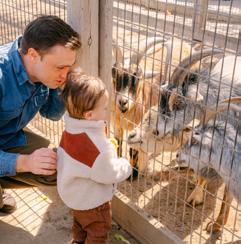




PHOTOGRAPHY BY PETER HEIRENDT
I grew up in Twin Falls, Idaho. It was a simple, small-town vibe. We had the regular seasons. Winters were fun to get pulled by a sled from my childhood Norwegian Elkhound and build igloos. Summers were filled with the smell of fresh-cut grass and warm nights with fireflies. The falls were incredible because all the trees changed to amber, and we built forts out of all the leaves.
I have always figured out a way to be creative. It makes me tick. I went to trade school for graphic design. Back in the day, I designed press kits for all the films in Hollywood. When I relocated to SLO, I found Anam Cre. The owner, Shevon, and Stephanie helped me with advanced hand-building. Stephanie helped me a lot with throwing on the wheel. After about five years, I launched my workspace and bought a wheel, and from then on, I was self-taught.
I have always been curious about how to make something look like something made of different materials. I became obsessed with making ceramic balloons. I saw them at art galleries and wanted to create them. I tried for a few years and gave up. While


in Portugal, I saw a woman making them by wrapping clay around the balloons. I purchased one that was a mold, traveled back to the States, and hung it in my office. It was not secure on the wall, and when I shut the door, it fell and broke. I went online to see if I could purchase another one, but the shipping was the price of the balloon. I knew then I needed to try again. The first iterations were pretty raw. I decided this was something I was going to master— and I still am. That was just over two years ago.
Artists who influence my work include Jeff Koons, Bansky, and Brett Kern—again, I love things that look like another material but are made of something else. I enjoy going to galleries, viewing other artists, and I love creating abstract pottery—I have made a vase that looks like a paper sack. I am always exploring new ways to improve or make my structures unique. And my most significant influence is Christine Silbaug at Backbay Pottery—she has given me a lot of advice and is still a mentor.
I just want to make people feel good. My balloons make people happy, and they will never deflate. The large balloons take around fifteen hours to make; They need to be sculpted and popped at the correct time, or they crack. I bisque-fire them after two weeks of drying. Then I paint three coats of paint, and glaze, and fire. After that, I do the final coat of metallic glaze and fire. I have a full video of the process on my website. Only about two out of five balloons survive or do not crack.
I am fortunate to have been featured in two galleries: Rowan Studios in Morro Bay and Lumen Gallery in Capitola.
BY BRIAN SCHWARTZ


In 1869, Jules Verne imagined a submarine long before one existed, in Twenty Thousand Leagues Under the Sea Star Trek offered a glimpse of the future, too—predicting technologies like Siri, universal translators, and flip phones. For centuries, science fiction has quietly served as a blueprint for what’s to come.
Though “Hadron’s Run” is Woody Clark’s debut novel, he’s no stranger to storytelling. A screenwriter with a long-standing passion for speculative fiction—the kind that pushes the boundaries of what’s possible—Clark draws inspiration not from fantasy but from the real-world potential of emerging technologies. “I’m not writing about elves, dragons, or aliens,” he says. “I’m envisioning technological advancements that could actually happen.”
The novel explores a compelling premise: What if people diagnosed with terminal illnesses today could travel forward in time to an era when cures exist? The idea was sparked by Clark’s visit to the Large Hadron Collider at CERN and conversations with physicists. Drawing on Einstein’s Theory of Relativity— that time passes differently for objects moving at high speeds—he constructed a narrative around time dilation. At the heart of “Hadron’s Run” is the Ouroboros,
a massive machine built by a terminally ill trillionaire to bend time and send a group of travelers into the future in search of healing.
Beyond time travel, “Hadron’s Run” imagines other provocative technologies: a suit that enables humans to photosynthesize sunlight and eliminate the need for food, a pill that replaces sleep, and a giant satellite-shade engineered to combat climate change. These aren’t just plot devices—Clark sees them as plausible innovations.
But his path to authorship hasn’t been without challenges. A cancer survivor, Clark’s perspective on life was irrevocably changed by multiple battles with the disease—his own and his wife’s. Those experiences ignited a desire to pursue every dream he’d once set aside: starting businesses, traveling the world, patenting inventions, and, most recently, writing a novel. “If you wait for tomorrow,” he says, “there might not be one.”
His optimistic view of the future owes much to the influence of his father, a climate scientist and co-recipient of the Nobel Peace Prize. Clark credits him with instilling a belief that even the most complex problems can be solved through innovation and determination.
As a late-blooming father to twin children, Clark brings a singular perspective to his work. His experiences with illness, resilience, and reinvention have shaped a worldview rooted in persistence, hope, and the limitless potential of the human mind. “Hadron’s Run” is more than a science fiction novel—it’s a celebration of imagination, scientific curiosity, and the enduring drive to shape a better future.
Now settled with his wife, Debra, and their twins in Morro Bay—after a difficult journey that included premature birth—Clark continues to embrace new creative challenges. Though he jokes that writing with young children at home is its own kind of science fiction, his mind remains filled with ideas for future books. If his journey has taught him anything, it’s that the most difficult paths often lead to the most extraordinary views—both literally and figuratively. SLO LIFE

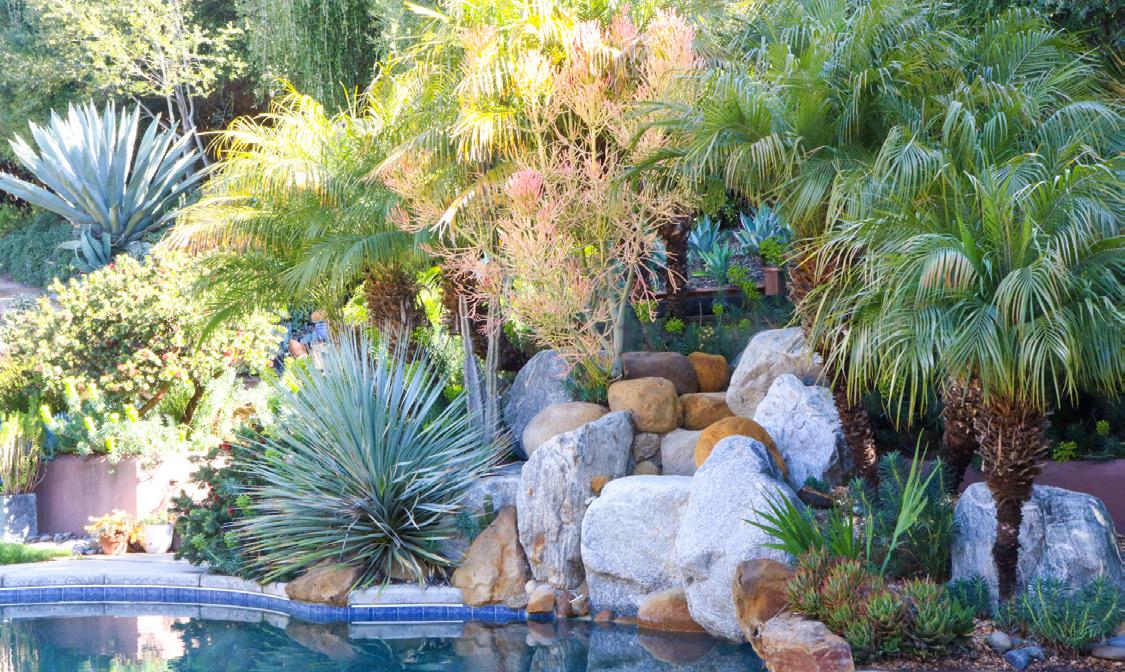






As the CCAA Scholar Athlete of the Year and recipient of the West Point Chemistry Award, this eighteen year old Mission College Preparatory Catholic High School senior has shown dedication and commitment and distinguished himself both academically and athletically.
What extracurricular activities are you involved in? For the last four years, I have been involved in both the football and basketball teams at Mission College Prep. Outside of sports, I dedicate time to Habitat for Humanity, helping to build and improve homes for families in need in our community. Additionally, I enjoy coaching youth basketball in the 3Ball program.
What do you like to do for fun? In my free time, I enjoy playing chess and exploring its many strategies, especially during matches with my friends. I also like spending time at the beach and love the water and enjoy surfing and bodyboarding. Staying active is important to me, so when I’m not at school or home, you’ll often find me at the gym.
What was one of your favorite memories? It was extraordinary to win a CIF title this year. We had nine seniors on the basketball team, and many of us had been playing together since we were little kids. It was truly special to go out with a title.
Do you have a career path in mind? I am planning on pursuing a career in biomedical engineering because I want to help people through technology and innovation. I am fascinated by the human body and want to learn more. I see myself working in the medical field, hopefully creating a meaningful positive impact in the lives of others.
If you could go back in history and meet anyone, who would it be? It would interesting to meet George Washington. I would love to talk to him about the birth of our nation and ask him questions about life in the 18th century. I would enjoy picking his brain about the Constitution and learning what the Founding Fathers intended with their words.
what could we improve in the world? I dislike seeing inequality in educational and vocational opportunities for people. There are too many talented people who face circumstantial barriers that are out of their control that make it difficult for them to access these types of opportunities.
What schools are you considering for college? I will be attending West Point in New York. SLO LIFE
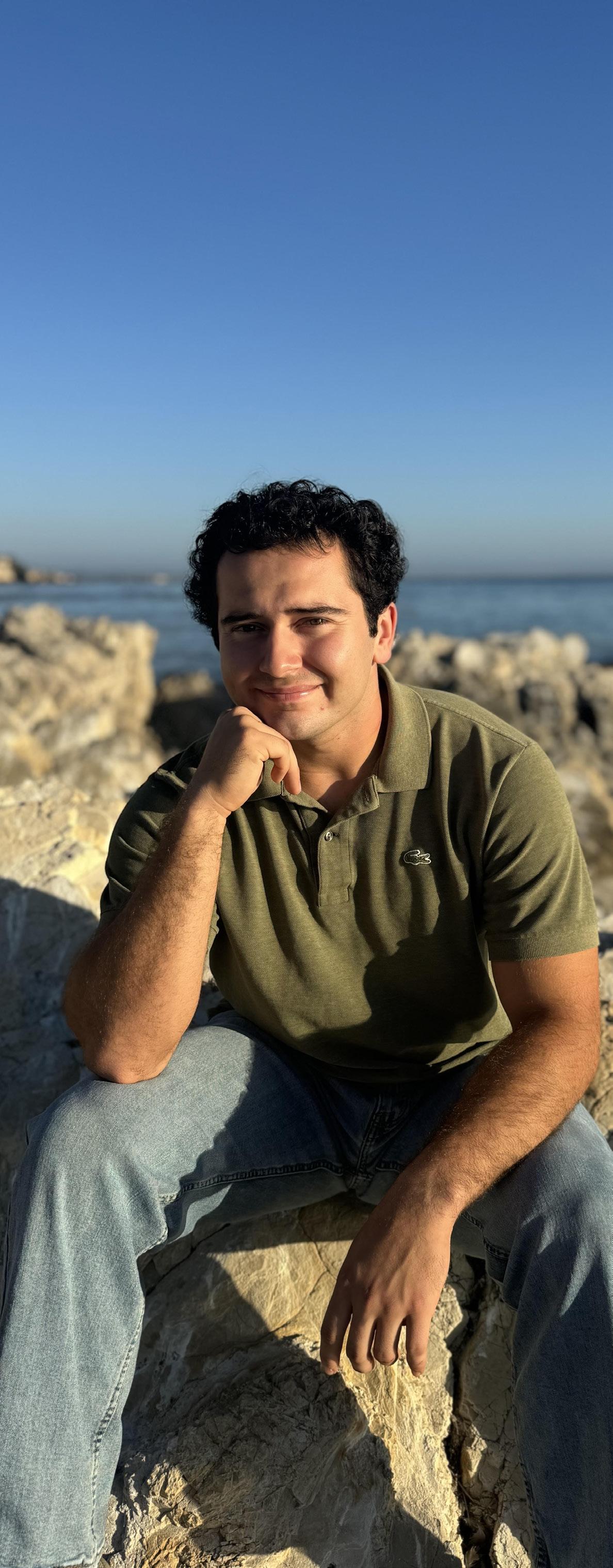

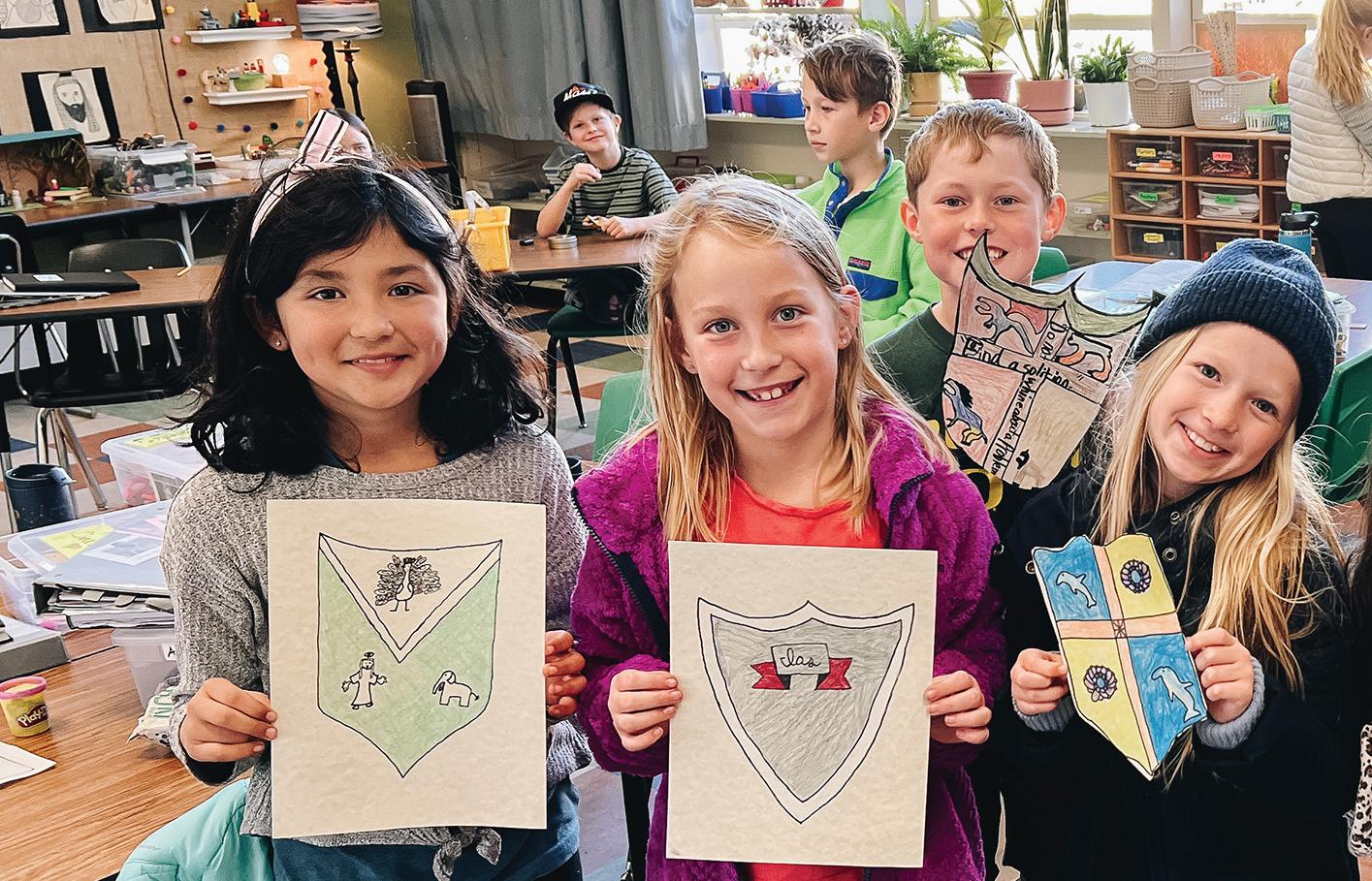

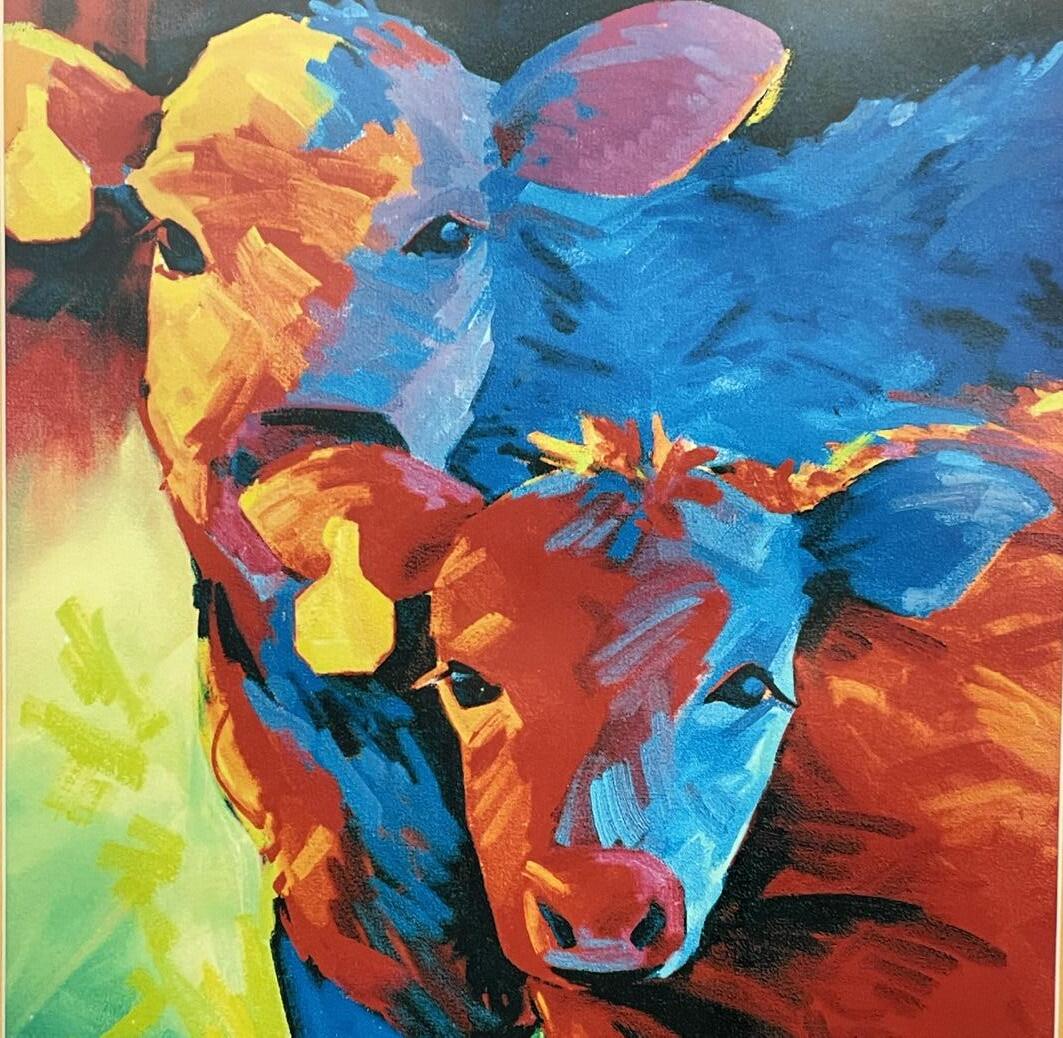




SSome homes speak through their architecture, others whisper through the lives lived inside them—but the most memorable ones do both. Each time I sit down to write about Dwelling on the Central Coast, I’m struck by the human side of the project—the stories that weave themselves into the fabric of the buildings. I often wonder which is more compelling: the house, or the people who live in it. Architect Jessica Lehrbaum helped me see how inseparable those two threads really are. “Well, isn’t that what we do?” she said. “We get to know people’s stories and their history. We learn about their lifestyles and families. And then we design their homes.”
Touring the remodel of the Buchon House and speaking with homeowner Morgan was no different. You could feel the weight of history in the walls—the stories and memories guiding every design decision. The result is a remodel as rich in human narrative as it is in architectural detail.
Built in 1920 by the Maino Construction Company, the Buchon House is part of a legacy you’ve likely stepped into if you’ve wandered the streets of San Luis Obispo. Since 1881, Maino buildings have helped shape much of the city, including Cal Poly’s campus. >>




James Molnar, the realtor who sold the house to Matt and Morgan Turrentine in 2022, has a personal connection: his mother, Mrs. Molnar, was the longtime previous owner. As a young girl, she moved from the coast to live with her aunt Cora in the Buchon House, so she could attend Mission College Prep—there was no high school in Morro Bay or Cayucos at the time. When her aunt passed away, she left the house to her niece.
Strangely enough, Matt and Morgan’s story echoes that past. Living in Cayucos, they were looking to move their blended family closer to SLO for easier commutes and to enroll their kids at Mission College Prep. As food and wine lovers, they also dreamed of being within walking distance of downtown. And in a twist that felt almost fated, Morgan’s late mother was also named Cora—a coincidence too poignant to ignore.
One of the biggest selling points for the couple was that the home hadn’t been “flipped.” The last thing they wanted was a house stripped of its history in the name of convenience— only for them to undo the damage in order to restore it.
Their priorities come through clearly the moment you step inside. From the exterior approach to the original oak plank floors, the house feels quietly rooted, as though it has always belonged to the landscape—and to them. >>


During the remodel, they uncovered original vertical-grain Douglas fir beneath layers of 1960s linoleum in the kitchen. Morgan had the boards salvaged and repurposed as custom millwork for the kitchen island, fireplace hearth, and primary bathroom vanity. Installed in a herringbone pattern, the planks offer a fresh take on historic material.
Also rescued from the original kitchen were nickel cabinet cup pulls, which they matched through Rejuvenation. Morgan even painstakingly removed the vintage yellow two-inch ceramic hex tiles from the backsplash—only to have them mistakenly discarded during demolition. As she’ll tell you,






Ultimately, it was fully demolished and rebuilt with a second-story addition—sprinklered and styled in the historic vernacular. They also preserved the 100-year-old orange tree in the side courtyard, a request from the homeowners, not the city.
After a year-long permitting process, Matt and Morgan finally broke ground in November 2023. Morgan led the interior selections, choosing hand-painted, craftsman-inspired ceramic tile for the fireplace, honed soapstone for the kitchen counters, and a backsplash that echoes the look of original beadboard walls. New oak flooring was delicately feathered into the original planks by Nate Smith of Coastline Flooring—it’s nearly impossible to spot the transition.
Upstairs, the second story feels like a quiet retreat. Windows are placed for privacy while still welcoming soft, indirect light. The primary bathroom, with its arched shower niche and warm, tactile materials, feels like a personal sanctuary— Morgan designed it herself.
During construction, Matt and Morgan welcomed a new baby, making their move-in day in November 2024 all the more meaningful. What strikes me most is how the house already feels unmistakably like theirs. Every detail reflects the life they envisioned: rooted in family, shaped by intention, and full of heart.
This wasn’t just a remodel—it was a foundation for the life they wanted to build together. And when a home is approached with that kind of clarity and care, the result is something truly special. SLO LIFE








AVERAGE PRICE PER SQUARE FOOT
ACTIVE LISTINGS
AVERAGE DAYS ON MARKET
PROPERTIES SOLD
661 UP FROM 600 LAST YEAR
$567 UP FROM $528 LAST YEAR MEDIAN % OF ASKING PRICE
1,626 UP FROM 1,510 LAST YEAR
forty seven UP FROM 40 LAST YEAR
MEDIAN SELLING PRICE
97.9% DOWN FROM 99.8% LAST YEAR
$805,000 UP FROM $775,000 LAST YEAR


With nearly 40 years of combined experience, we understand the loan process and are dedicated to helping our clients make informed decisions through responsive, consultative customer service. We are deeply connected in the local market with all of the benefits of being backed by one of the largest mortgage companies in the country.











2024 $1,170,897 $843,734 $1,688,286 $1,097,521 $1,754,818 $1,528,800 $843,463 $897,645 $1,075,184 $1,052,498 $754,462 $1,988,868 $785,447 $911,783 $856,445 $832,190 $1,254,038 $771,833 $1,206,363 $1,011,781 2025 $1,399,577 $865,414 $2,164,286 $1,394,029 $1,655,900 $1,104,333 $864,915 $1,087,017 $1,019,625 $1,046,051 $644,556 $1,770,835 $776,851 $975,167 $976,140 $761,667 $1,432,707 $822,500 $1,550,882 $1,086,337

BY PADEN HUGHES

When we think about health and wellness, we often picture yoga mats, green smoothies, or intense gym sessions. But there’s another, quieter path to well-being—one rooted not in sweat or supplements, but in the creative power of art. Specifically, pottery.
On California’s Central Coast, one woman’s journey from isolation to inspiration has sparked a movement that’s reshaping how we think about mental health, creativity, and community. Through her studio, The Pottery—now with three vibrant locations in Atascadero, Grover Beach, and Los Osos—founder Alecia Teague is proving that a simple lump of clay can be a lifeline.
Teague’s story begins far from San Luis Obispo County. A beloved art instructor at Cuesta College, she relocated to England with her family just before the pandemic, following a career opportunity for her husband. While her three children settled into their new schools and her husband thrived in his new role, Teague found herself adrift. Teaching had always been her creative and emotional anchor—a way to connect and feel purposeful. In England, that anchor was gone.
“I felt incredibly isolated,” she recalls. “It was a season where my mental health took a hit, and I didn’t even realize how much until I found pottery.”
Everything changed during a solitary walk, when she wandered into a local pottery studio. Though she had never worked with clay before, she impulsively signed up for a class. The result was transformative. “I fell in love with the process—the feel of the clay, the focus it demanded, the way it grounded me,” she says. But it wasn’t just the tactile nature of the medium that restored her—it was the people. In that small studio, surrounded by strangers who became friends, Teague found connection in the midst of profound loneliness. Pottery wasn’t just a hobby; it became her healing.
When the family returned to the Central Coast, Teague brought that spark back with her. She began teaching pottery classes and even delivered clay and tools to people’s homes during the pandemic—fostering creativity and connection at a time when both were desperately needed. That grassroots effort eventually grew into The Pottery, with the Atascadero studio opening first, followed by Grover Beach, and most recently, Los Osos. Each location serves as a creative hub where people don’t just shape clay— they shape relationships, reclaim their creativity, and rediscover themselves.
I experienced this firsthand during a private, one-on-one wheel-throwing class with Teague. As I struggled to center my clay—a meditative, often humbling process—I overheard two women chatting at nearby wheels. Both were recent transplants from Altadena, having relocated to the Central Coast after losing their homes in the devastating Los Angeles wildfires. Now, here they were, reconnecting with themselves and one another through clay. As they made plans to meet again, I witnessed community forming right in front of me.
My own time at the wheel was a study in vulnerability. I wanted to get everything “right”—to produce a perfect pot, to prove I was capable. But Teague gently reminded me, “It’s not about the pot; it’s about the process.” That stayed with me. So many of us shy away from creativity because we fear imperfection. We’ve been conditioned to believe we’re not “artists” unless we’re exceptional. But as a local friend recently said to me, “We all called ourselves artists as kids, didn’t we? Somewhere along the way, we lost that confidence.”
The truth is, we are all artists. Reclaiming that identity—through pottery, painting, writing, or any creative act—isn’t just a return to joy. It’s a radical act of self-discovery and wellness.


Science agrees. A 2020 study published in BMC Public Health found that frequent arts engagement, such as participating in pottery classes, is linked to lower levels of mental distress and higher life satisfaction. Among nearly 24,000 participants, those involved in arts activities more than once a week reported significantly better mental health outcomes. A separate 2016 study found that seventy-five percent of participants showed decreased cortisol (a stress hormone) after just forty-five minutes of art-making. Pottery, with its tactile, immersive nature, appears especially effective in this regard.
These findings feel especially urgent in a time when isolation and anxiety are widespread. Spaces like The Pottery offer more than just classes—they offer sanctuary. “Clay brings people together,” Teague says. “It’s a medium that invites vulnerability, and that’s where real relationships form.”
The Pottery offers a range of classes—from beginner wheelthrowing to hand-building workshops—designed for all skill levels. Whether you’re a seasoned artist or someone who hasn’t touched clay since elementary school, you’ll find a place here.
In a world that often feels disconnected, The Pottery reminds us that health and wellness go beyond the physical. Creating with your hands, sharing stories with strangers who become friends, and embracing the imperfect, beautiful process of making art—these are essential acts of connection and care.
BY TILLY WRIGHT
With seasonally themed crafts, scavenger hunts, and storytime, the Family Free Day at the San Luis Obispo Botanical Garden offers an inviting, handson way for families to explore nature. For my kids and me, it’s become a cherished monthly tradition—an opportunity to discover the garden’s seasonal changes, soak up the sun, and learn something new together.
On our most recent visit, the day’s theme was Guardians of the Green, focusing on the trees of California’s Central Coast. The garden was buzzing with activity as staff and volunteers welcomed families at tables filled with nature-themed crafts. Children made crowns, painted truffula trees inspired by Dr. Seuss, and participated in storytime readings.
A standout moment was the story read by Jordan Guzman, a student at Cal Poly and intern at the garden. Wearing a cheerful orange tutu, she captivated the children with “Would You, Could You Plant a Tree?”, featuring the beloved Lorax character. Her enthusiasm and warm storytelling made the reading especially memorable.


Beyond the activities, we always look forward to strolling through the Children’s Garden. Every visit reveals something new—towering trees, blooming flowers, and peaceful paths. Along the way, we’ve discovered a hidden reading nook, a sandbox, a mini greenhouse, and a whimsical willow hut.
When I asked my tweens what they enjoyed most, they quickly responded: “Making crowns!” Using crayons, colored pencils, and even fresh plant materials, they created unique wearable art and proudly wore their creations as we continued exploring the garden.
The themed scavenger hunt added another layer of excitement. To earn their prize—two stickers each— children were asked to locate five items in the garden. After completing the hunt, they gathered to recite the day’s pledge:
I promise to keep the planet clean, Protect the blue and guard the green. With hearts and hands, I’ll do my part, A Guardian of the Green, right from the start!
Hearing their voices in unison was a moving moment. My oldest even tried to memorize the pledge afterward, inspired by the day’s message.
To make the most of our visit, I usually bring along a picnic. On this occasion, we had French bread, lunch meat, fresh strawberries, cookies, applesauce, and plenty of water in our reusable bottles. Taking time to enjoy lunch outdoors helps us slow down and extend our time in nature.
The garden offers benches and picnic tables throughout, providing convenient spots to rest and refuel. Food is welcome, and we always make sure to clean up after ourselves—a simple step in modeling sustainable habits for our children.
The San Luis Obispo Botanical Garden is located in El Chorro Regional Park. From April through September, the park charges a $3 parking fee per vehicle. While admission to Family Free Days is free, this small parking fee supports the park’s maintenance and services—something we’re happy to contribute to.


After enjoying the garden’s programs, we often continue our adventure by visiting a nearby stream, crossing the wooden bridge, or stopping at the large playground just across from the garden—an irresistible bonus for the kids.
Each Family Free Day is held on a Sunday, making it an ideal weekend outing for people all ages, and it helps remind us of our connection to the earth and the importance of preserving it. The San Luis Obispo Botanical Garden offers families not only a place to play and learn, but also a deeper understanding of sustainability and stewardship. We’re grateful for the memories it helps create—and the lessons that will last a lifetime.
June 8: Buzzing Beauty
July 13: The Garden Express
August 10: The Scaly Safari
September 14: Secret Life of Plants
October 19: Boo-tanical Garden
November 9: Birds of a Feather
To learn more, visit their website at slobg.org.

BY CHUCK GRAHAM
The rain came down in blinding sheets, blurring everything beyond the shoreline. The surf was heavy, but between the pelting rain and the southeast winds, we couldn’t get a clear sense of the swell as we prepared to launch along the rugged Big Sur Coast.
Still, we had to launch. Somewhere just south of Andrew Molera State Beach, I sat in my kayak while Patrick O’Hea and Will Miller, both former U.S. National Rowing Team members, balanced on their standup paddleboards. The tide was surging in fast, and we were quickly running out of real estate.
I helped O’Hea and Miller launch first. They slipped through the heaving shore break almost flawlessly. Then it was my turn.
I jumped into my kayak and punched through the first wave. But the second was already cresting. I mistimed it. Suddenly, I was surfing backwards on a six-foot wall of water, sucked into the shoreline. My stern slammed into the sand and I was catapulted. I instinctively curled into a ball mid-air, bracing for impact. My head grazed the gritty shore as I tumbled—gear flying in all directions in a fullblown yard sale.
Setting out from that nameless, wind-battered stretch of coast felt like stepping into chaos. Sideways rain, lowhanging fog, and a storm-choked sky erased the horizon. It was a gray, disorienting void. We were winging it. The tiny cove we’d chosen pulsed with tidal energy, waves sweeping in, slapping against the rocks, and rebounding toward our right flanks. We were contending with surf from three directions. Most waves rolled in front of us, but the larger sets hurled back steep foam balls from the cliffs, blindside threats with unpredictable force. >>
Miraculously, I was unscathed—just packed with sand inside my wetsuit. The kayak was intact. Aside from scrambling to retrieve scattered camera gear, a spare paddle, and a water bottle, I was already planning my next attempt.
In the chaos, I’d lost sight of O’Hea and Miller. The storm had swallowed them. I had told them to stay near the mouth of the cove, but now I just needed to get off that beach. Timing it right, I finally punched through three

heavy waves—and there they were, standing tall beyond the breaking surf, rain still hammering down.
Since Highway 1 opened in 1937, Big Sur’s seventy-fivemile coastline has closed more than fifty times due to landslides. In just the 2022–2023 winters alone, there were rapid fire closures due to back-to-back wet winters involving multiple slides. In the years since January 2023, it’s been impossible to drive end-to-end without taking a detour from the Piedras Blancas Lighthouse north to Carmel.
This place is wild. Of California’s 656 miles of coastline, the Big Sur Coast is arguably its most dramatic. When the road is open, Big Sur draws more visitors than even Yosemite National Park. Yet the area remains sparsely inhabited—about 2,000 people eke out an existence along its steep cliffs and fog-drenched canyons, where the Santa Lucia Mountains plunge into the Pacific.
Every time I’d driven that serpentine route, I’d wondered what it would be like to truly live out there, to explore it from the sea. So that’s what we did—set out to paddle it. I hoped to finally grasp just how remote and formidable those sheer cliffs really are.
Turns out, they’re every bit as awe-inspiring—and a little terrifying—as I imagined. Some dwellings appeared perched on cliff faces so precarious they looked as if parachute training was a prerequisite for residency. Shacks sagged toward boulder-strewn beaches, clinging to the earth like they were trying to slide back into the sea. More than once, I asked myself, “How does anyone sleep up there?”
Things are constantly shifting. Landslides are common, and wildfires only make it worse. Burned hillsides turn into unstable slopes when winter rains hit. Between 2016 and 2023, Caltrans spent over $315 million on emergency repairs alone.

With the highway closed for nearly two years, most people can’t see Big Sur right now—at least not the way we did. From sea level, it’s a whole different world. Raw. Majestic. Humbling.
After the storm, the transformation was stunning. One day after the storm, blue skies opened up, white clouds drifted overhead, and sunlight danced on the waves. It’s amazing what sunshine can do to brighten the outlook of an excursion. We peeled off our wetsuits and pulled on board shorts, hats, sunglasses, and sunscreen and glided southward, sun-kissed and grateful.
Of course, the coast didn’t let up easily. We faced more punishing landings in heavy surf, moments of reflection under star-strewn skies, and incredible wildlife encounters—all in places you’d never reach from a car window. Each launch was a test, every beach hard-won.
From above, Big Sur is breathtaking. From sea level, it’s humbling. And as we neared the end of our journey—winds pushing us toward the rocky beach just north of Piedras Blancas Lighthouse—we knew one more rough landing awaited us. But so did solid ground.
Nothing came easy on the Big Sur Coast. That’s what made it unforgettable. SLO LIFE



At Kiko, admitting I was wrong has never been more delicious
BY JAIME LEWIS PHOTOGRAPHY BY MARIAH VANDENBERG
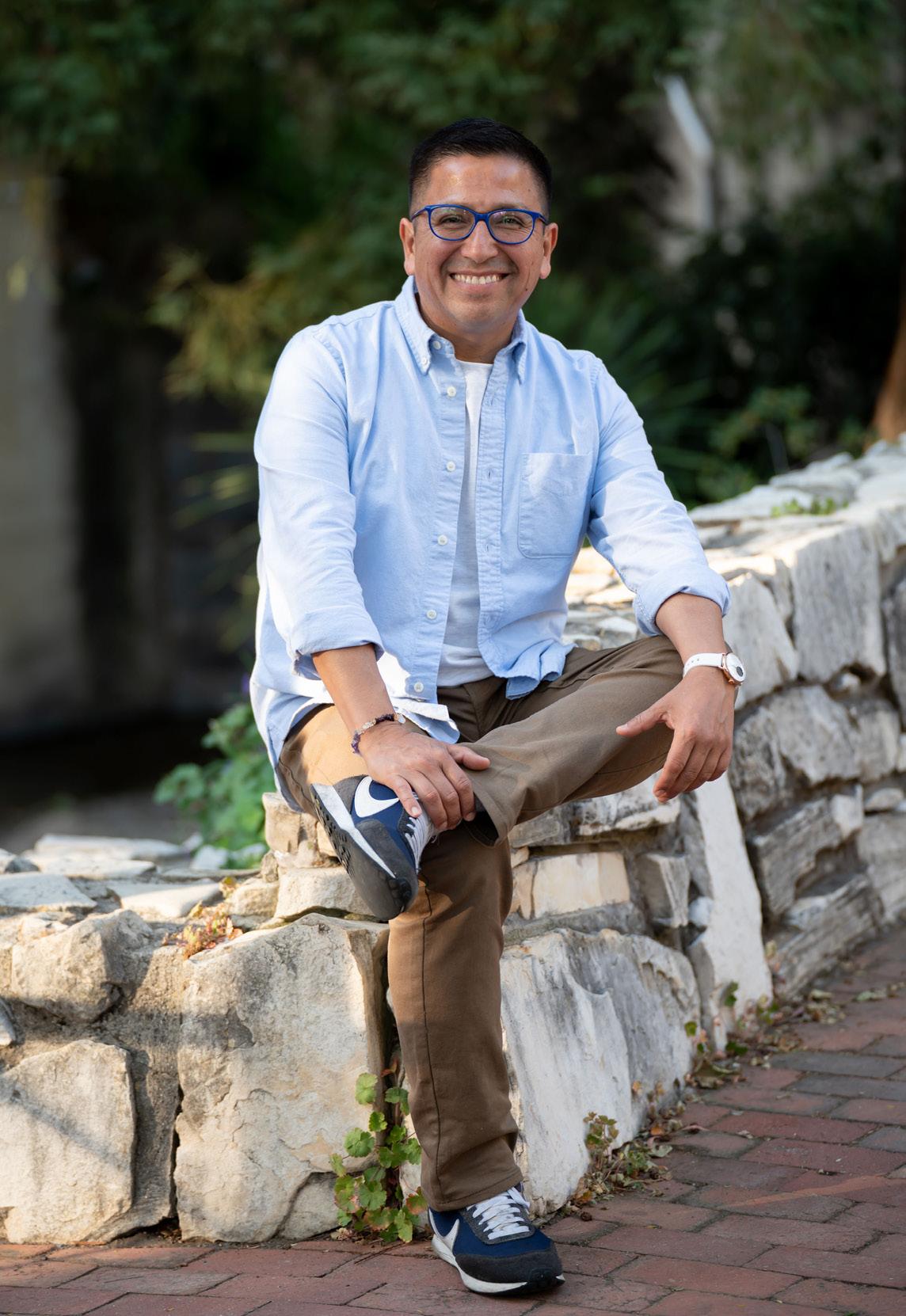
Here’s something I take no pleasure in confessing: I am prejudiced against certain restaurants. Yep, you read that right. There are a handful of places, particularly in San Luis Obispo, in which I don’t bother to dine.
Why? One word: location.
Hear me out.
There are several buildings in SLO that have, historically, struggled to keep restaurants over the long-term. While I am an enthusiastic eater, I don’t usually want to dine in places that won’t be around for more than a few months. Why torture myself to taste something I won’t be able to enjoy again in the future?
This logic is flawed, obviously, but I’ve never been great at living in the moment. Besides, regular readers of this column know that many of my favorite spots close anyway, despite their address. I once covered a restaurant here that shuttered before the magazine even went to print, highlighting both the extreme challenge of owning a restaurant and my ineptitude at forecasting its longevity. Conversely, lots of places in what I considered “cursed” buildings have proved me wrong and enjoyed raging long-term success.
I’m chagrined to admit that, after dining at Kiko recently, I had to add another one of my inaccurate predictions to the list. Because while the restaurant may occupy a sleepy spot I’d written off for years, the food, ambiance, and enthusiasm for this new Peruvian eatery are about as vibrant as it gets.
Pisco, potatoes, and Peruvian pride
“With food, more is not better,” says Kiko Pomalaza, leaning across the table as Shakira’s live album pulses through the restaurant’s speakers. “It’s about the right ingredient in the right proportion, in the right combination.” The restaurateur’s colorful glasses and Nike sneakers match his energy as he gestures toward another small plate arriving at our table. “When you try it together, that’s when the magic happens.”
Pomalaza opened his eponymous restaurant just ten months ago, but the warm, creek-side patio and vibrant interior decorated by his Italian partner Desiree Stefanini already feels like a SLO institution. He moved to California from Peru twenty-two years ago, landing in Orange County before making his way to the Central Coast a decade ago.
“People here are so kind and genuine,” he says with an infectious smile. “In Orange County, you don’t walk in the streets. People don’t say hi to you. They don’t smile at you.”
>>

What truly sets Kiko apart is its dedication to the rich culinary tapestry of Peru—a cuisine that Pomalaza explains has five distinct cultural influences. “Peru was conquered by Spain in the 1500s, so that’s the first influence,” he says. “Then African slaves arrived in the 1700s, bringing their flavors and cooking techniques.” Later came Chinese immigrants, then Japanese, and even Italian influences.
The result is a food-lover’s dream—a cuisine that pulls from disparate culinary traditions while maintaining its own identity. Take the ceviche, for instance: while many Latin American countries marinate fish in lime juice for hours, Peruvian ceviche adopts a Japanese sensibility, using fresh-caught fish marinated briefly in “tiger’s milk,” a potent blend of lime juice, celery, ginger, garlic, cilantro stems, and aji amarillo (yellow chili).


“In Peru, value is not size; value is flavor,” Pomalaza says, explaining the restaurant’s approach to serving smaller, precisely composed plates designed to be shared. Each dish is prepared fresh to order—nothing is premade—which is why Kiko serves dinner only, seven days a week.
The restaurant’s pisco program is equally impressive. This clear Peruvian brandy, made from grapes, forms the backbone of their bar menu. “We make it here,” Pomalaza says proudly, motioning toward the still visible behind the bar. Their house-made pisco creates highly drinkable cocktails like the classic Pisco Sour—tart with fresh lime juice and topped with a cloud of fluffy whipped egg whites—and the Mango Pisco Punch, a refreshing concoction garnished with a fat wedge of jalapeño.
Among the standout dishes are the anticuchos— Peruvian skewers with African roots. At Kiko, they’re made with succulent pork (in Peru, they’re traditionally made with cow heart). The meat gets a quick marinade in aji panca before being grilled and served with a vibrant sauce and roasted potatoes.
Even more impressive are the scallops—imported from Peru, served on the shell, and topped with parmesan, butter, herbs, and a touch of pisco. For someone who doesn’t typically enjoy seafood (me), they were a revelation.
But perhaps most emblematic of Peru’s culinary heritage are the potatoes, served with huancaína sauce—a creamy, slightly spicy concoction made with aji amarillo. “Peru is the land of potatoes,” Pomalaza explains, noting that his homeland boasts an astonishing 4,400 varieties of the tuber.


Like many successful restaurateurs, Pomalaza is a businessman first—he studied business in Peru—but his commitment to authenticity and human connection is what makes Kiko shine. “I hire people who love people,” he says. “I can train you about Peruvian food and service standards, but I cannot train you to be a good human being.”
If the packed dining room is any indication, SLO is already embracing this philosophy. And I’m eating my words about “cursed” locations—along with every delicious bite at Kiko.

BY BRANT MYERS PHOTOGRAPY BY PETE BILTOFT
I’m not a religious man, yet I take spiritual journeys on a regular basis. Today’s pilgrimage brings me to a new holy site in San Luis Obispo. Here, metal stools stand in for wooden pews as I belly up to a poured-concrete pulpit. The bread and the wine? Served together in a tall pint glass. A beertender preaches the good word of effervescent pours while I listen, rapt, to a sermon on the virtues of fresh-hopped ales. This sanctuary is not a church—but it is a temple. A temple to beer. Welcome to Shrine Brewing.
Tucked into the burgeoning enclave affectionately known as Duncan Alley, Shrine Brewing sits just behind a familiar landmark: Ancient Owl Beer Garden. When a beer garden and a brewery share walls, I get excited. It’s a one-stop shop for all my libation needs. If you haven’t yet visited Duncan Alley, you’re missing out—it’s also home to Shindig Cider, along with several winery tasting rooms.
Shrine was easy to find and even easier to enter. I parked twenty feet away and made a beeline for the bar, where I immediately struck up a conversation with two of the founders: Joe Florence and Max Lachowyn. A few minutes later, Justine Florence arrived, pouring beers and greeting guests with a warm, practiced rhythm.
With the trio assembled, I peppered them with questions. Amusingly, the hardest one for them to answer was, “What are your titles?” Like any good startup crew, they wear many hats and have poured their time, money, and plenty of sweat equity into building their dream. The vision largely stems from the husbandand-wife team of the Florences, who bring a potent mix of skills from the graphic design world, combined with Joe’s brewing education from the American Brewers Guild in Vermont.
Before brewing, Joe worked in apparel design in Seattle and ran a side hustle in screen printing—often for local breweries. That exposure sparked his passion for craft beer. With a nudge from Justine, he enrolled in the Guild’s program, which paved the way to an internship at Firestone Walker in Paso Robles. It was there he met Lachowyn, a lead brewer with experience in breweries from Ohio to California. Together, they bring a dynamic blend of creativity and technical prowess to Shrine.
Justine, clearly the “vibesetter in chief,” responded when I asked an open-ended question about how Shrine came to life. Joe pointed to the distinctive tile she had selected—everything else, it seems, flowed from that design choice: the color palette, the custom mural by Long Beach artist Shrine, and even the energy
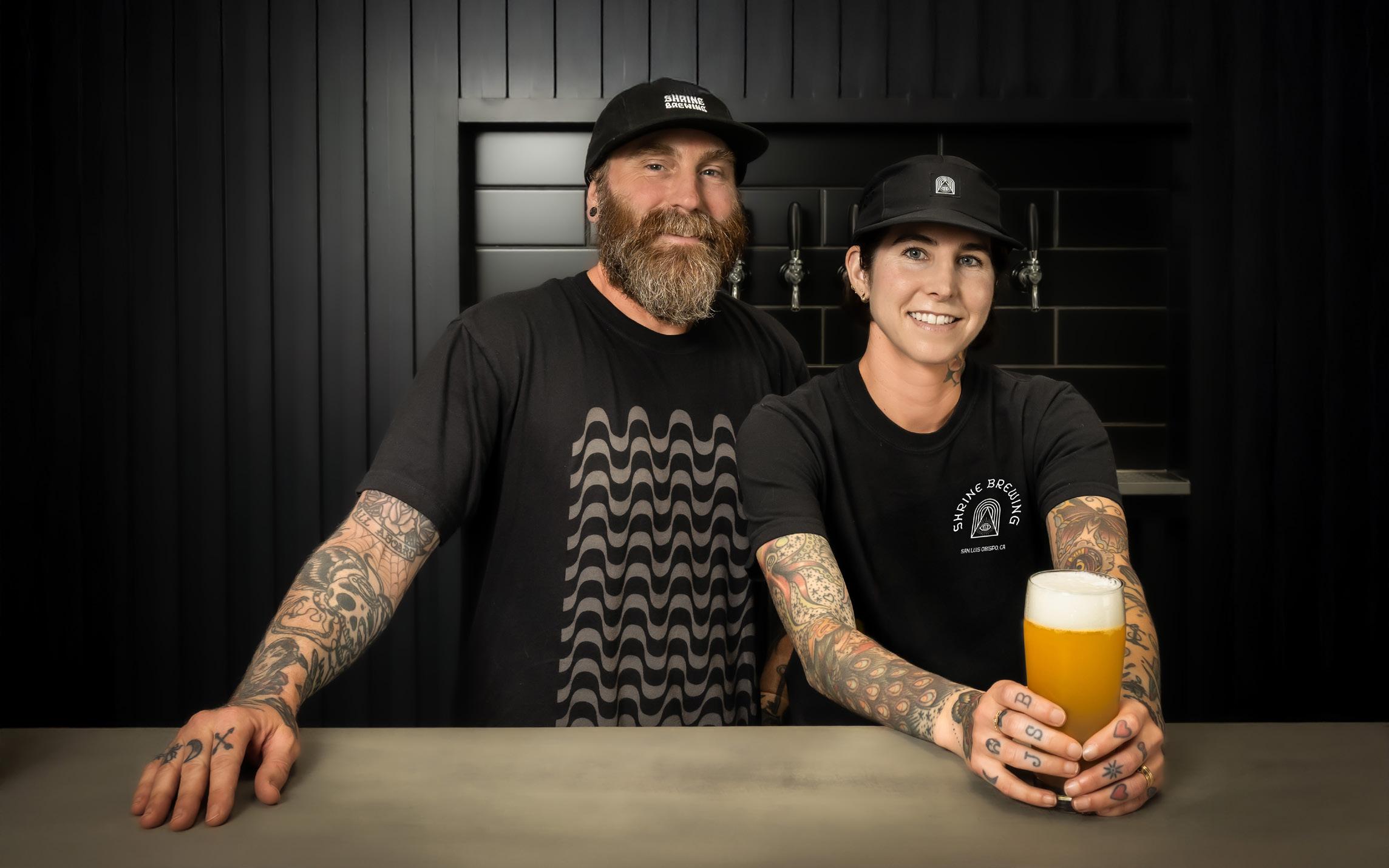
of the space itself. With punk rock metal thrumming from the speakers and a certain countercultural undercurrent, Shrine’s tasting room stands apart.
“We wanted something different,” they explained, tossing out words like “city,” “expression,” “art,” and “welcoming space.” No reclaimed barnwood walls. No wine-barrel tables. Even their glassware defies convention—I sipped samples from a stemless Teku, like drinking from a round-cut, open-topped diamond. A beautiful thing, indeed.
When I visit a new brewery, I like to start with the flagship—a beer that defines the brand. Shrine was no exception, though I was tempted by all seven offerings on their draft list. Lachowyn, a West Coast IPA enthusiast, pays homage to the style that put West Coast breweries on the global map: lightly bodied, assertively hopped, and far from their English forebears. With Firestone cred behind them, it’s no surprise they’ve nailed the profile. As they grow, they plan to incorporate more lagers, but hops will always remain central.
I tried Field 24, a hopped wheat ale, followed by Lou Brown, a bold brown ale with a hoppy twist. Then came two variations on IPA, each featuring its hop bill prominently on the menu. The nuanced differences in aroma and flavor made it feel like a guided tasting through the hop fields of the world.
So if you’re on a journey for solace, a pilgrimage for pilsners, or a crusade for crushable beers, let the shining light of Shrine Brewing guide your way. Order whatever calls to you, raise your glass, and toast my new favorite holy trinity behind the bar. Cheers to Shrine.
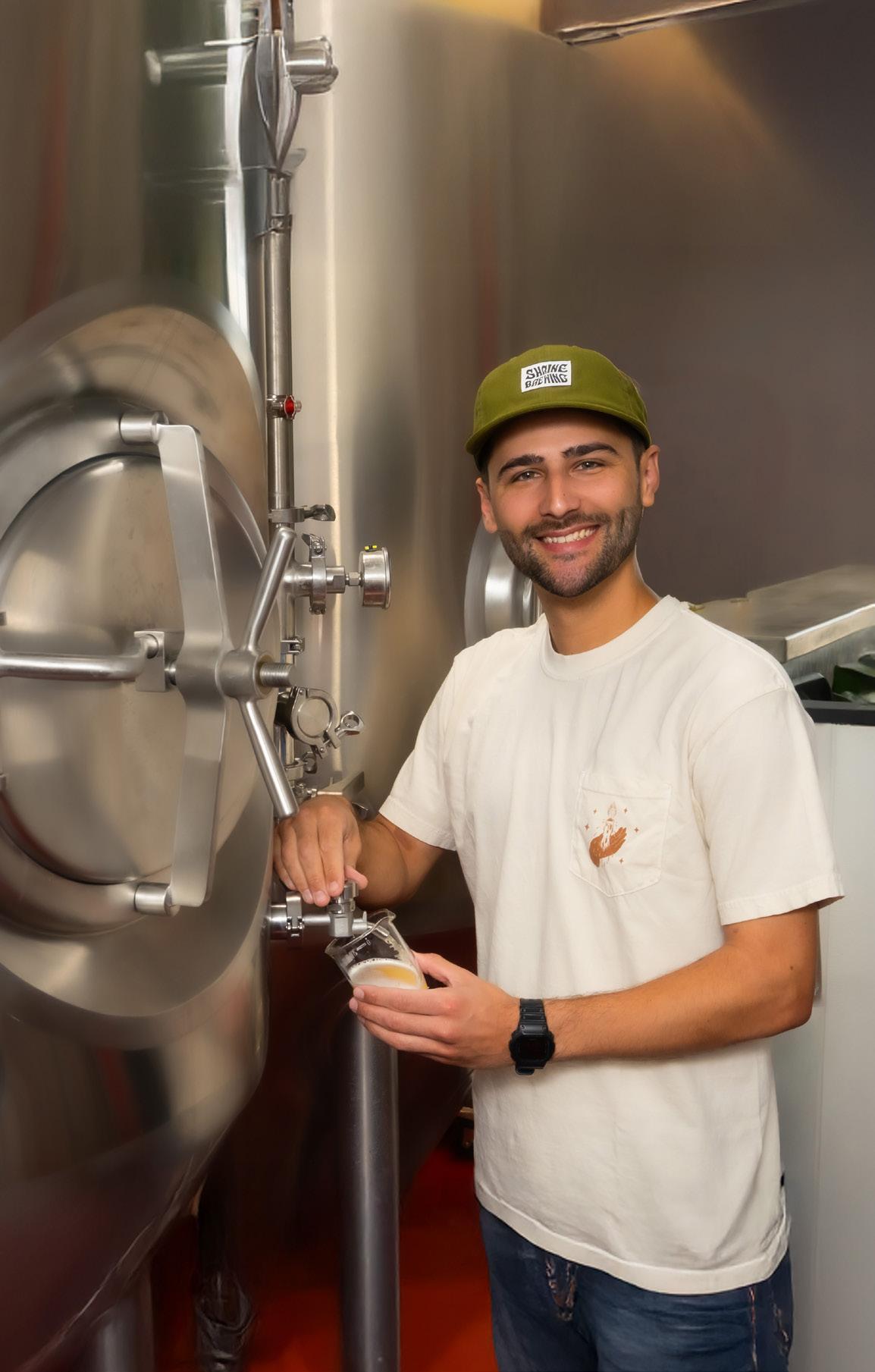

!on tap
Stairway to the Stars
Try Shrine’s flagship West Coast IPA, Stairway to the Stars—double dry-hopped with Krush, Simcoe, and New Zealand’s Riwaka hops. Dank, tropical, and kissed with stone fruit, it’s layered over a light-bodied base with heady, immersive aroma. I would drink this every day, even on Sundays.
shrinebrewing.com





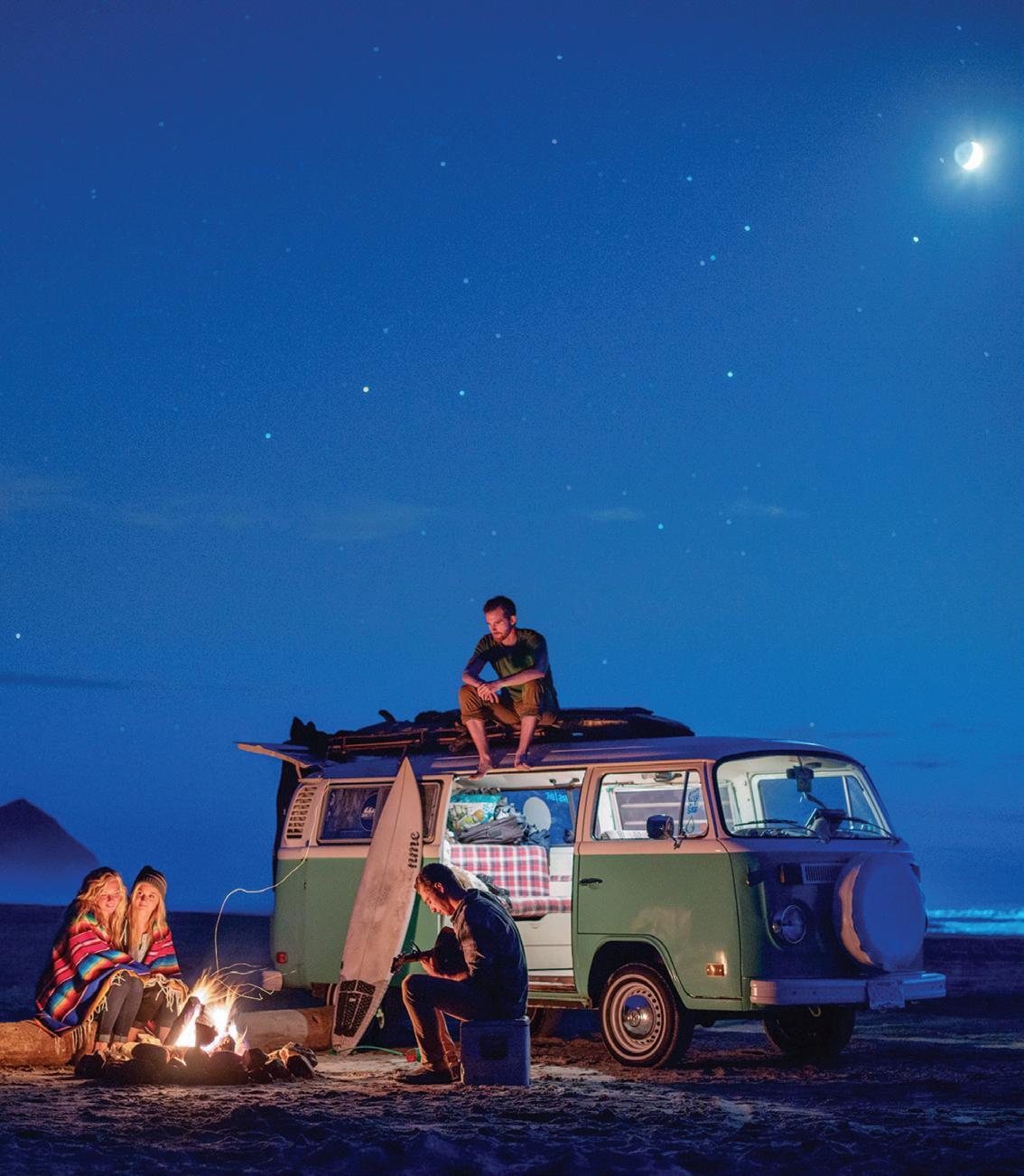




BY DAN FREDMAN PHOTOGRAPHY BY EMILY DESJARDINS
Ryan Deovlet was once on track for a life in baseball, headed to UC San Diego with hopes of making it to the majors. But a career-ending injury during a tryout with the Florida Marlins brought that dream to a halt. Pivoting, he turned his attention to economics, sociology, and law—preparing for a future as a sports agent.
Then fate, in the form of his free-spirited cousin Bradley, intervened. “I had a pretty conservative upbringing in Orange County,” Deovlet says. “Bradley was a big-game fisherman in Hawaii with a coffee plantation in Kona. I spent a summer out there and saw, for the first time, what it meant to work with your hands—to grow something from the soil into a cup. That left a mark.”
After graduation, restless and inspired, Deovlet joined WWOOF (Willing Workers on Organic Farms), landing on an organic farm in Australia. Days started with surfing, followed by work in the fields and long dinners with great wine. “It was a rhythm that felt right,” he says.
His travels took him from Australia to New Zealand, with stops in Sydney and Melbourne along the way. In Melbourne, he met his future wife, Shauna, while working in a youth hostel. A chance conversation with a restaurant patron led to a harvest job at Turramurra, a small winery on the Mornington Peninsula. That job lit the spark. With some vineyard experience and a bit of savings, Deovlet headed to New Zealand to continue learning the craft.
By 2005, after nearly a year abroad, he returned to California determined to build a life in wine. “The Central Coast felt like the right fit—great weather, familiar grape varieties,” he says. A meeting with Chad Melville (Melville Winery) led to a job with Stephen Ross Wine Cellars in San Luis Obispo, where he learned winemaking under Steve Dooley and the business side from Paula Dooley. It was a crash course, and Deovlet soaked it all in.
From there, he moved up the coast to Red Car Wines in Sonoma, absorbing wisdom from consulting winemaker David Ramey, and then to Argentina to work with Paul Hobbs at Viña Cobos. But it was a seminar at the World of Pinot Noir that cemented his path.
“There were legends on that panel—David Hirsch, Larry Hyde, Richard Sanford, Josh Jensen,” he recalls. “Sanford said, ‘Pinot Noir is about commitment, perseverance, the journey . . . there’s magic in it.’ That really stuck with me.”
After the seminar, Deovlet connected with Sanford, who offered him fruit to get his label off the ground. “He quoted Joseph Campbell—‘When you find your bliss, doors will open’—and I knew I had found mine.” >>
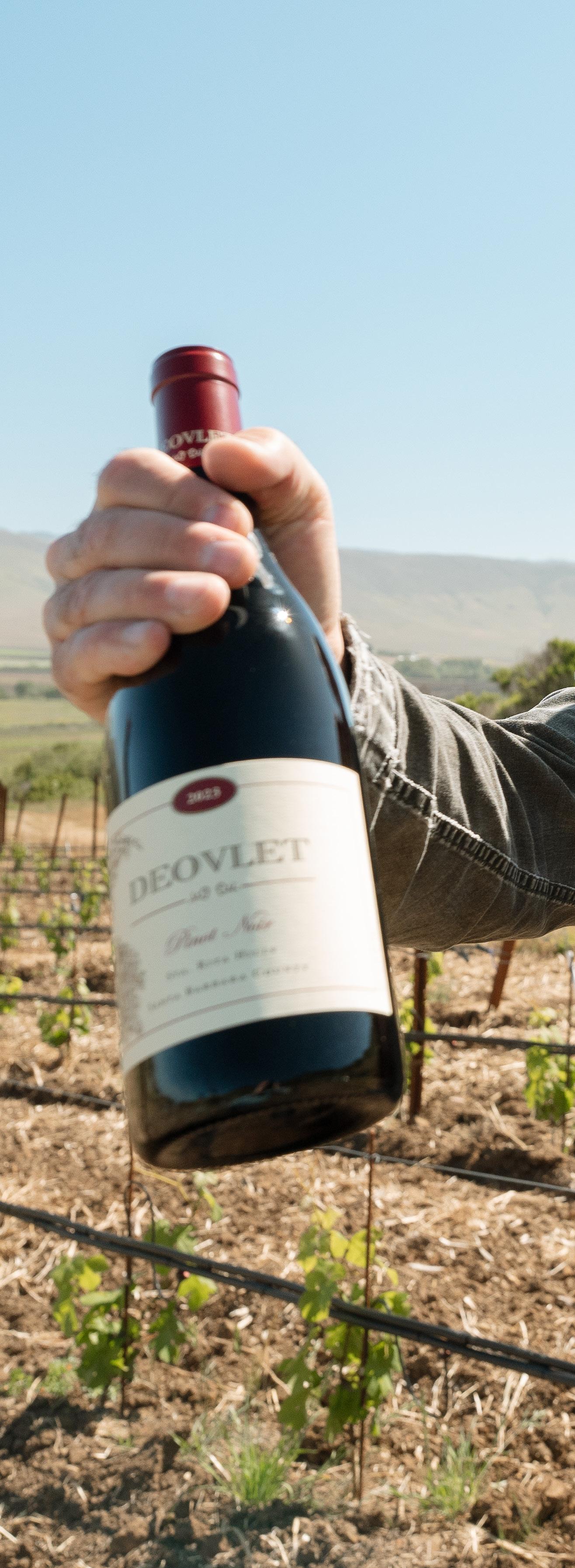

In 2009, Deovlet Wines was born with just four barrels. By 2010, production grew to fifteen. “Be careful what you wish for,” he laughs.
In 2014, he became head winemaker for Biddle Ranch Vineyards. “The local families behind Biddle Ranch have been incredibly supportive. The wine community in SLO has a ‘rising tide lifts all boats’ energy.”
Today, he sources fruit from top vineyards, including Spanish Springs, Talley’s Rincon Vineyard, and Biddle Ranch’s estate. In Santa Barbara, he’s worked with La Encantada Vineyard for over fifteen years, and continues to partner with Vogelsang and Star Lane in Happy Canyon. All wine is produced on Suburban Road in SLO—Deovlet Wines in one building, Biddle Ranch next door.
In 2015, Deovlet purchased land on Los Osos Valley Road to plant his own vineyard—the first in that area. “It’s a transverse mountain range with cool Pacific influence and classic Los Osos loam—very similar to the Sta. Rita Hills,” he says. The first harvest is expected in 2027, with long-term potential.
When asked about his winemaking philosophy, Deovlet doesn’t hesitate: “I like nuance and restraint. I pick early to preserve acidity and keep alcohol lower. I want wines that evolve, not shout. More savory than fruity. Herbs, not greenness. Floral, not flashy.”


His approach extends to aging: “We hold back wines for our wine club, releasing ten-year-old bottles exclusively to members. I want the wines to be enjoyable young but also built to age fifteen to twenty years.”
He’s not doing it alone. Assistant Winemaker Grace Kegel has been with Deovlet since 2013. A Cal Poly enology grad, she earned her stripes during a harvest in New Zealand, then joined Stephen Ross before being referred to Deovlet. “We’ve made wine from seventeen grape varieties for three wineries,” she says. “Always staying true to place and vintage.” Their partnership is grounded in mutual respect. “We’re like back-to-back gunslingers,” Deovlet jokes. “I don’t want to see her facial expressions while we taste. We have slightly different approaches, but our palates are aligned.”
The team is now rooted in Baywood Park, where both Deovlet and Kegel live. In May 2025, they opened the new Deovlet tasting room on Second Street. “There’s real electricity in Baywood right now,” says Deovlet. “We’re next to Noi’s Thai and across from High Street Deli. It’s great to pour wine for our neighbors.”
The space offers wine flights, current releases by the glass, and small bites. “Wine keeps you humble—it has history, personality, and a deep sense of place,” he says. “To share that with the community we live in? That’s the real reward.” SLO LIFE
Sta. Rita Hills stands for Santa Rita Hills, an American Viticultural Area (AVA) in Santa Barbara County, California.
The abbreviation “Sta.” is a historical and stylistic shorthand for Santa—commonly used in place names, particularly in California and the American Southwest.
Interestingly, the AVA officially adopted the abbreviation “Sta.” in its name due to a trademark dispute. The Chilean winery Viña Santa Rita opposed the use of “Santa Rita Hills” in the U.S. wine market, so to avoid legal issues, the AVA was officially designated “Sta. Rita Hills” when it was established in 2001.
This AVA is renowned for its cool-climate Pinot Noir and Chardonnay, thanks to the unique transverse mountain range that channels coastal breezes and fog inland—a feature that also shows up in Ryan Deovlet’s Los Osos vineyard site.

*2022 Deovlet Sanford & Benedict
Chardonnay, Sta. Rita Hills // $48
Bright straw color, ripe and rich, with an appropriate “pay attention to me, dammit!” presence. There’s a lot of understated complexity for a medium-bodied wine weighing in at thirteen percent alcohol. Leaning toward the salty/minerally style of Chardonnay, stone fruit and citrus elements are swirling around in the glass, too. It’s energetic, focused, and is drinking beautifully now, but it’s got big potential should you be one of the rare people with resolve enough to stash some in the cellar until say, 2035.
2022 Deovlet Zotovich Family Vineyard
Pinot Noir // $65
Raspberries, plums, with maybe a few chocolate nibs and savory herbs lurking down there under the fruit. Deovlet aged it in just enough new French oak barrels to add a touch of body, but it’s beautifully balanced and overall delicious. Wonderful things happen when a winemaker works with a specific grower over a long period of time and they’re in agreement as to the style of wine they want to make.
2024 Biddle Ranch Vineyard
Pinot Grigio // $30
This personifies what Pinot Grigio should be: purity in a glass. Citrus, stone fruit, a few herbs (to keep it Italian, right?) with a bright acidity and underlying minerality, it’s great with lighter, summertime food or just by itself. A portion of the proceeds go to Jack’s Helping Hand, a local charity benefiting childhood cancer research, just an extra reason to feel good about enjoying this wine.
2021 Biddle Ranch Vineyard Spanish Springs
Pinot Noir // $60
When I taste through the BRV wines, there’s a common profile of minerality that seems to run through each of them. It’s not a stylistic benchmark as much as it’s a unifying sensory vibe. All the wines show an abundance of fruit, but it’s balanced by there being just enough acidity, just enough oak, and a soulful presence that sets them apart from other wines in the region, even from wines made from the same vineyard. Spanish Springs Vineyard is a very cool site (literally) and you can kind of taste the tension of grapes lunging toward ripeness. It’s a compelling wine.
Deovlet Wines deovletwines.com
1315 2nd St. Los Osos (805) 634-9177
Biddle Ranch Vineyard biddleranch.com
2050 Biddle Ranch Road San Luis Obispo (805) 543-2399
Happiness is great musical theatre. With charm, wit, and heart, You’re A Good Man, Charlie Brown explores life through the eyes of Charlie Brown and his friends in the Peanuts gang. Musical numbers include My Blanket and Me, The Kite, The Baseball Game, Little Known Facts, Suppertime, and Happiness. Guaranteed to please audiences of all ages.
June 6 – June 29 // slorep.org

The SLO Blues are a wooden bat, Summer Collegiate Baseball Organization that has been competing each summer, providing first-rate family entertainment to California’s Central Coast residents since 1946. Each home game is played at Sinshiemer Stadium and is sure to provide fun for all. Through August 3 // bluesbaseball.com


Enjoy an evening filled with the famous last works of Pyotr Tchaikovsky, Sergei Rachmaninoff, and Richard Strauss. There is a certain mystique surrounding a composer’s last work. Was it the last spark of inspiration as death closed in? Did the composer foretell their own demise as they completed it? To this day, we hear this unconventional symphony through the lens of its composer’s death.
June 7 // pacslo.org

Join ECOSLO, Revive Dive, and the Central Coast Aquarium for a World Oceans Day Cleanup in Avila. The beach cleanup is from 9 a.m. to 11 a.m., and enjoy food and live music immediately following at the Central Coast Aquarium.
June 7 // centralcoastaquarium.org
Held every June to benefit KCBX Public Radio, the event features musicians performing a variety of genres, including funk, soul, folk, gospel, roots rock, Americana, jazz, bluegrass, blues, world music and more. Nestled in the beautiful El Chorro Valley, the temperate climate, the trees, the early summer setting, and the slow-moving pace create a pastoral backdrop for relaxing and listening to great music with family and friends. It’s hard to imagine a better way to kick off the lazy days of summer.
June 13 – 15 // liveoakfest.org







Head over to Hambly Farms for a day of lavender-filled fun and relaxation during the First Annual Lavender Bloom Celebration. This exclusive, limited-admission event invites you to experience the rolling hills of San Miguel transformed into a sea of vibrant purple, with the soothing scent of fresh lavender filling the air during the peak bloom and create lasting memories with friends and family.
June 14 // hamblyfarms.com

Thousands of locals and visitors of all ages and backgrounds will gather every Friday to enjoy a free concert series including live music, cold beverages, and the chance to unwind and enjoy community together.
June 20 – September 12 downtownslo.com
This free event encourages intergenerational learning and creative expression for children of all ages. Every second Saturday from 11 a.m. to 1 p.m., families are invited to SLOMA’s lawn to learn about the visual arts together using unique activity kits and create an art project inspired by current exhibitions. June 14 + July 12 // sloma.org

Enjoy a weekend of touring the SLO County Farm Trail and savoring summer. Many local family farms will be swinging open their gates to welcome ticket holders to tour, taste, and learn about local agriculture. Guaranteed to be a family fun experience for all.
June 20 – June 22 // farmsteaded.com


Take in an evening of stargazing at the Santa Margarita Lake Park. From the Ranger Station proceed straight ahead and down the hill 1/4 mile to where the road flattens out at the marina parking lot entrance. The Star Party will be located at the parking lot of the marina and boat launch.
June 28 // slocountyparks.com





• Resolve inner conflicts
• Heal past trauma
• Break free from patterns
• Learn to love and heal
Schedule a Free 15 minute consultation
Jessica Bany, LMFT Psychotherapist
www. jessicabany.com (805) 704-3698

Dr. Arnie Horwitz HEALTHY RELATIONSHIPS
Are you feeling overwhelmed and confused? I can help.
Specializing in
From the town parade featuring hand-made floats to the Front Street Faire and sand sculpture contest to the spectacular fireworks show from the pier, Independence Day in Cayucos shouldn’t be missed.
July 4 // cayucoschamber.com


- Relationship Conflicts - Parenting & Self-Esteem
- Separation and Divorce - Personal Life Planning
- Grief and Loss - Career Uncertainty

Therapy/Counseling/Coaching
Dr. Arnie Horwitz • 30 yrs. Experience 805-541-2752
www.doctorarnie.com



Whether it’s taking in a pig race or finding beauty in the award-winning flowers, watching Rodeo Finals or singing along to your favorite musicians, the “biggest little fair anywhere” is the place to soak in the summer sun and create lifelong memories.
July 16 – 27 // midstatefair.com
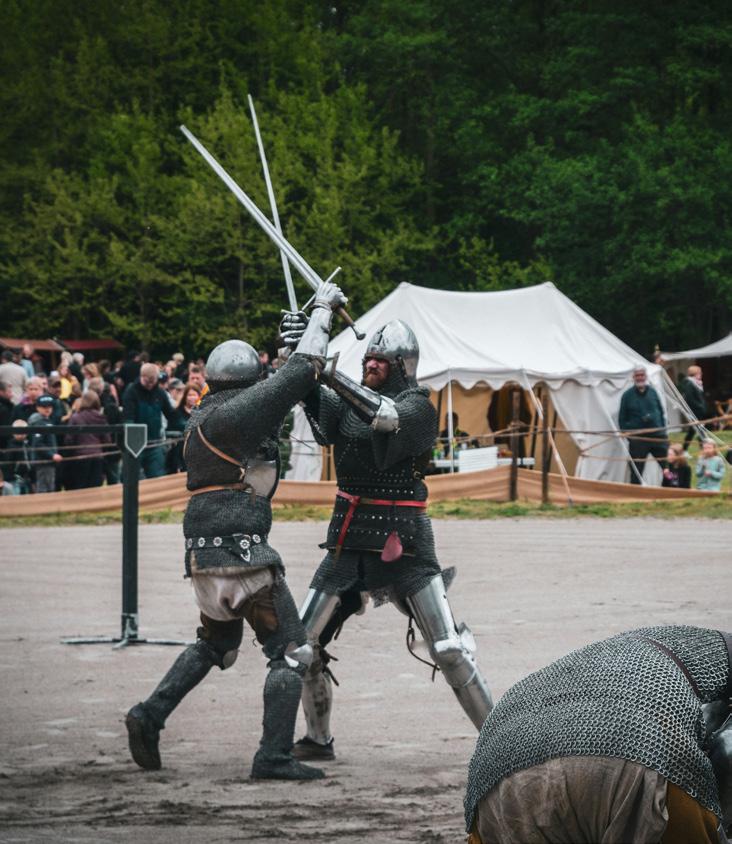
History comes alive with thrilling battles, lively performances, and vibrant marketplaces. Don your finest attire and get lost in time enjoying the riotous stage plays, hilarious comedy acts, storytelling, and authentic Elizabethan dancing, singing, puppetry, and magic on four stages throughout the village held at Laguna Lake Park.
July 19 – 20 // ccrenfaire.com
Scott Yoo leads the Festival Mozaic Orchestra in a thrilling finale concert of their 2025 San Luis Obispo Summer Music Festival. Beethoven’s exciting Leonore Overture opens the concert, followed by the Nielsen Flute Concerto with Alice K. Dade as soloist. The second half of the program will feature Prokofiev’s darkly romantic suite inspired by Romeo and Juliet. July 26 // festivalmozaic.org










